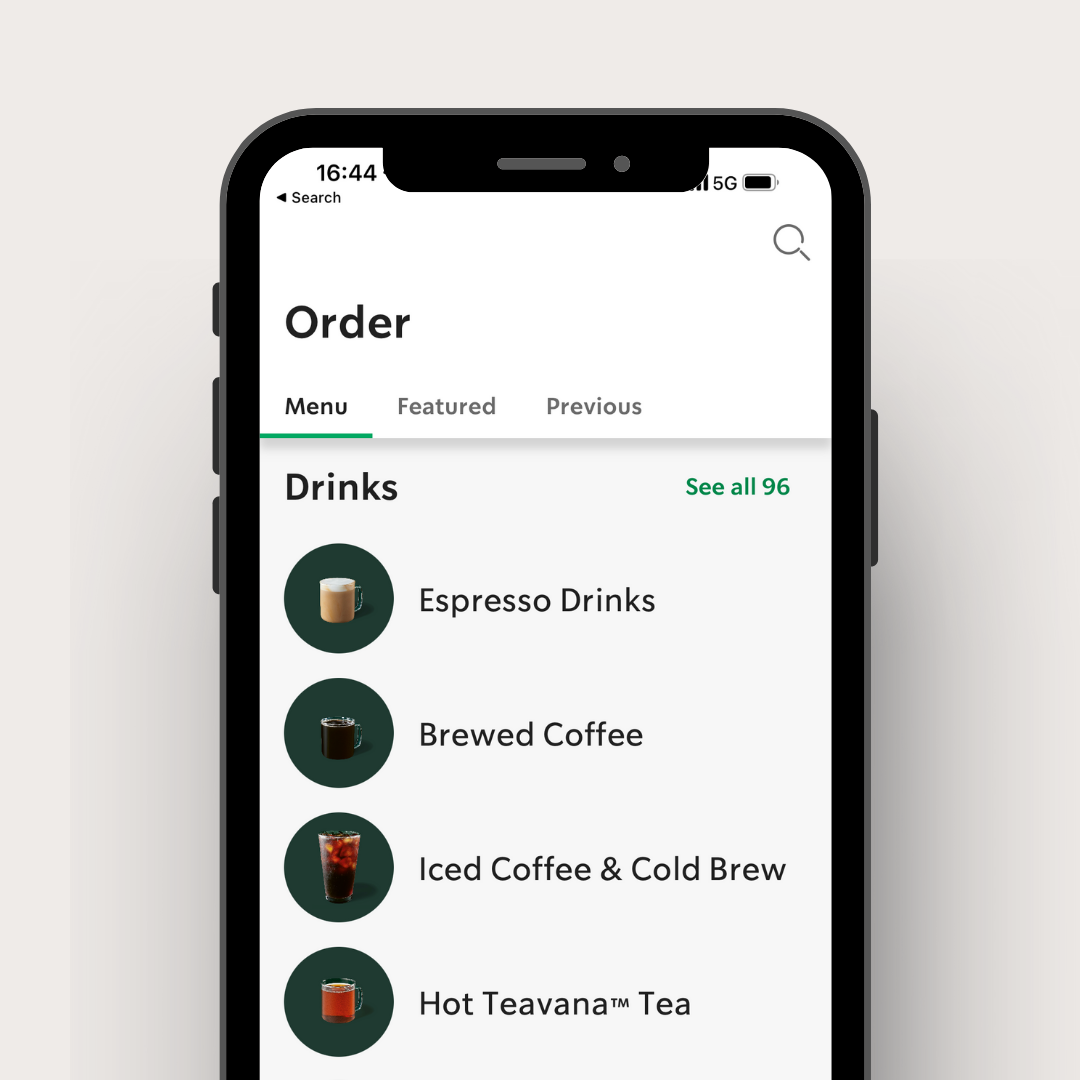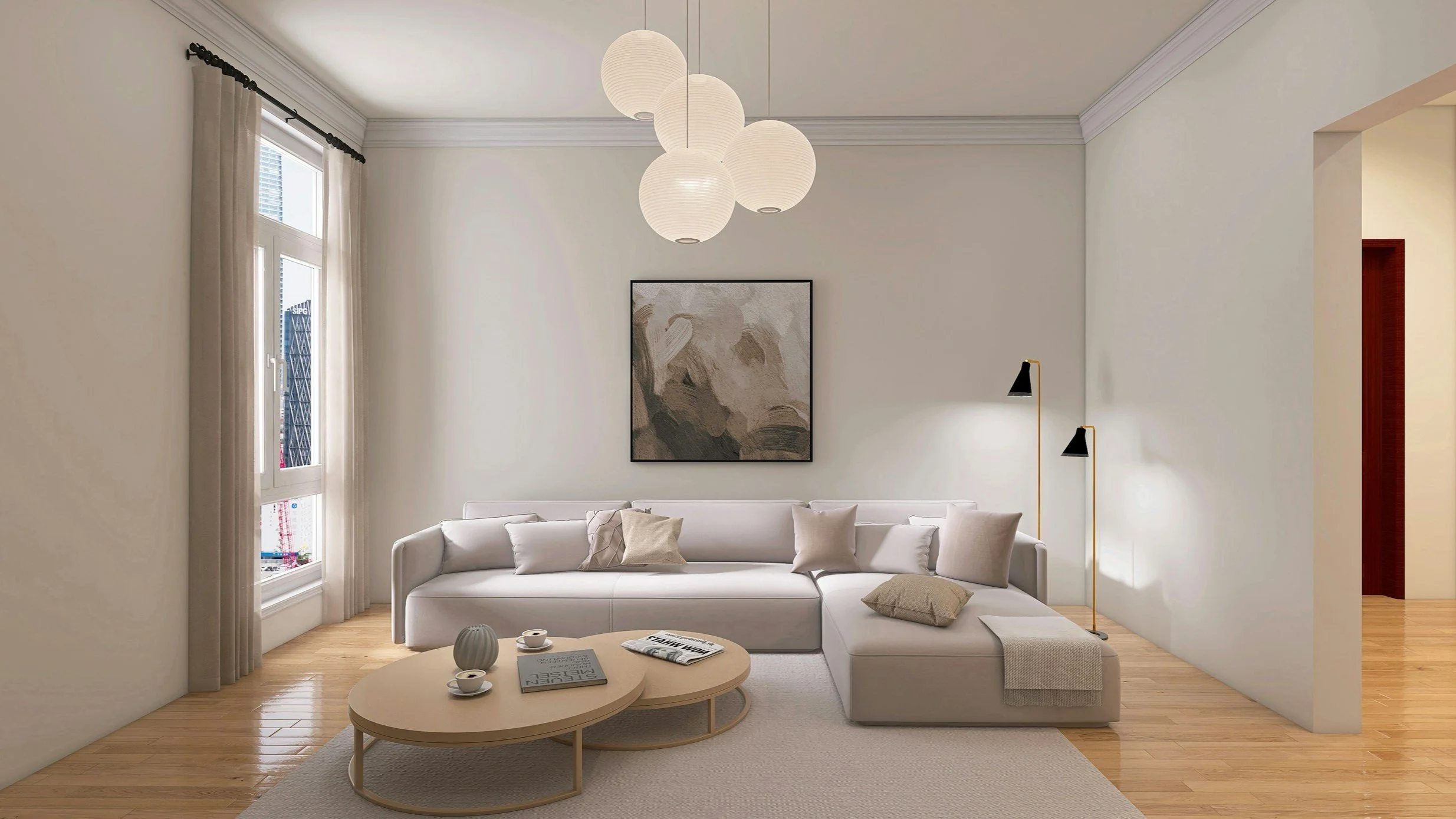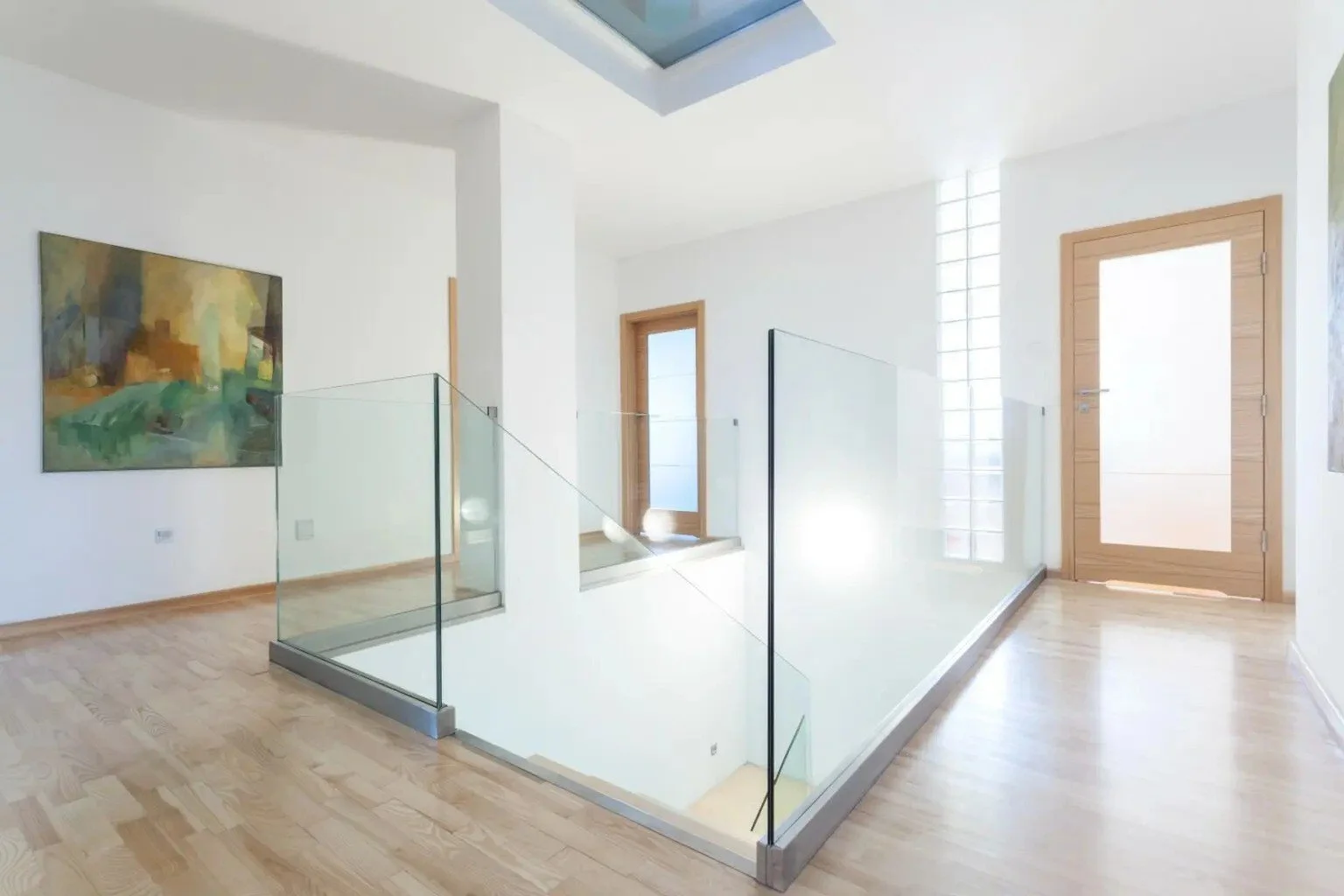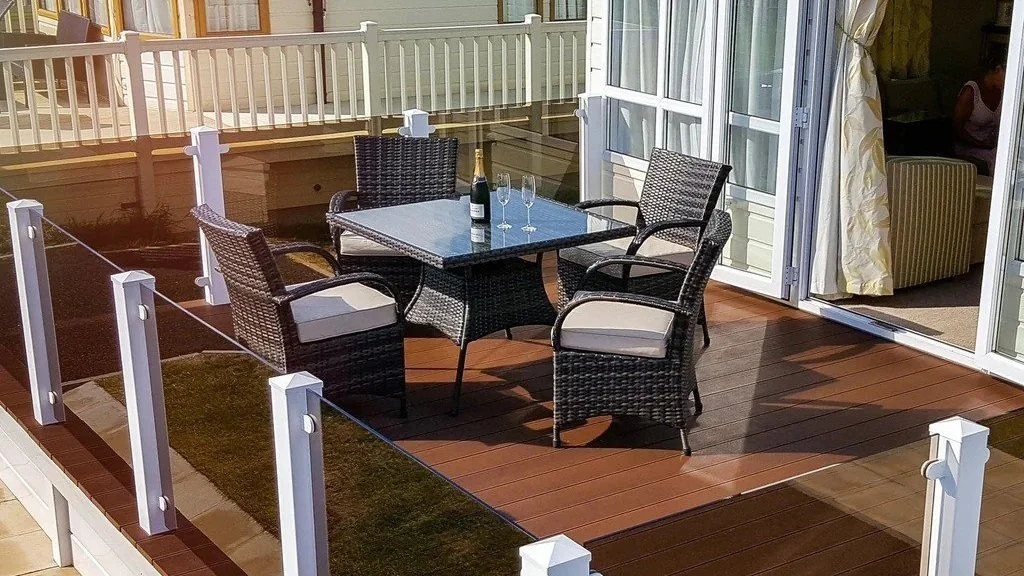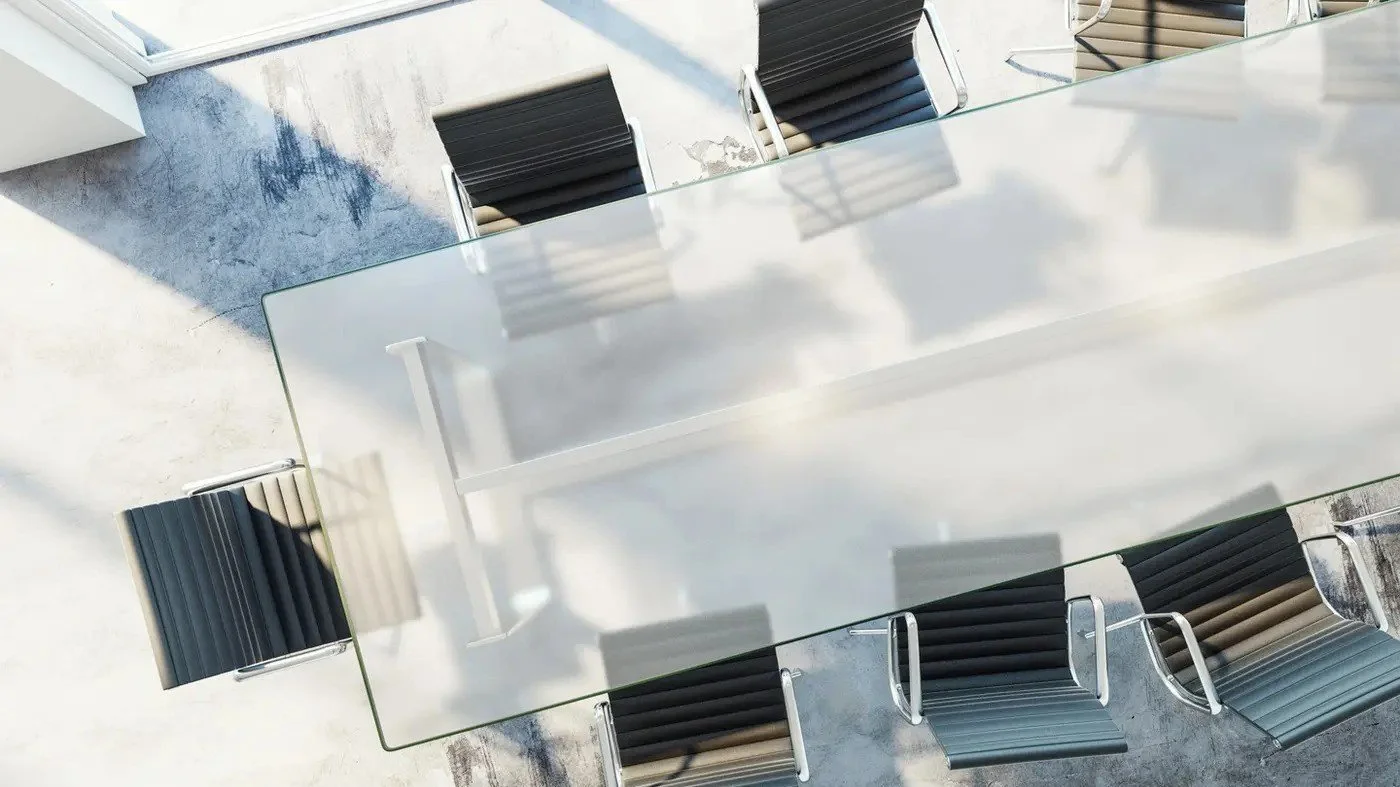Key 2025/26 tax year dates, deadlines & thresholds
Here are the self-assessment tax return dates, VAT return dates for financial year 2025/26 in the UK.
If you’re self-employed or an employee working from home, staying informed about key UK tax dates is essential for managing your finances. With the 2025/26 tax year beginning in April 2025, it’s a good time to review important deadlines.
Here you’ll find the critical self-assessment and VAT return dates for the 2025/26 tax year to help you plan effectively.
Click to see the tax year dates for 2024/25.
When does the 2025/26 tax year start?
The 2025/26 tax year begins on 6 April 2025 and ends on 5 April 2026.
Self-assessment tax return dates 2025/26
Here are your Self Assessment tax return dates, and other important deadlines for individuals and self-employed in the 2025/26 tax year:
| 5 April 2025 | 2024/25 tax year ends |
| 6 April 2025 | 2025/26 tax year begins |
| 31 July 2025 | Second Payment on Account (POA) for Income Tax for 2024/25 |
| 5 October 2025 | Deadline for Self Assessment registration to notify chargeability of Income Tax/Capital Gains Tax for 2024/25 |
| 19 October 2025 | Deadline for postal payments of CIS, Class 1 B NICs and PAYE to HMRC |
| 22 October 2025 | Deadline for electronic remittance of CIS, Class 1 B NICs and PAYE to HMRC |
| 31 October 2025 | Deadline for postal submission of Self Assessment tax returns for tax year ended 5 April 2025 to be received by HMRC |
| 30 December 2025 | Deadline for online submission of Self Assessment tax returns for tax year ended 5 April 2025 |
| 31 December 2025 | Due date to file company accounts with Companies House for limited companies with 31 March 2025 year end |
| 14 January 2026 | Income tax due date for CT61 period to 31 December 2025 |
| 31 January 2026 | Deadline for filing Self Assessment Tax Returns for tax year ended 5 April 2025 and 2024/25 Capital Gains Tax
Balancing payment of tax due for 2024/25 and first Payment on Account for Income Tax for 2025/26 |
| 5 April 2026 | 2025/26 tax year ends |
| 6 April 2026 | 2026/27 tax year begins |
Deadlines for submitting VAT returns 2025/26
The deadline for submitting your return is 1 month and 7 days after the end of the VAT period, whether you pay your VAT monthly or quarterly.
Here are the key dates for submitting VAT returns in the 2025/26 tax year:
| 7 April 2025 | Deadline for VAT returns and payments of Accounting Quarter period ending 28 February 2025 |
| 7 May 2025 | Deadline for VAT returns and payments of Accounting Quarter period ending 31 March 2025 |
| 7 June 2025 | Deadline for VAT returns and payment of Accounting Quarter period ending 30 April 2025 if filed online |
| 7 July 2025 | Deadline for VAT returns and payments of Accounting Quarter period ending 31 May 2025 |
| 7 August 2025 | Deadline for VAT returns and payments of Accounting Quarter period ending 30 June 2025 |
| 7 September 2025 | Deadline for VAT returns and payments of Accounting Quarter period ending 31 July 2025 |
| 7 October 2025 | Deadline for VAT returns and payments of Accounting Quarter period ending 31 August 2025 |
| 7 November 2025 | Deadline for VAT returns and payments of Accounting Quarter period ending 30 September 2025 |
| 7 December 2025 | Deadline for VAT returns and payments of Accounting Quarter period ending 31 October 2025 |
| 7 January 2026 | Deadline for VAT returns and payments of Accounting Quarter period ending 30 November 2025 |
| 7 February 2026 | Deadline for VAT returns and payments of Accounting Quarter period ending 31 December 2025 |
| 7 March 2026 | Deadline for VAT returns and payments of Accounting Quarter period ending 31 January 2026 |
Read more working from home tips & guides:
The best coffee machines to buy
There are so many automatic coffee machines to choose from, depending on how you like your coffee, your budget, your lifestyle and your kitchen.
How to choose the right automatic coffee machine for your home
As we discussed, there are so many automatic coffee machines to choose from - all with their own pros, cons, and price ranges! Luckily, the result of them is largely the same: a delicious cup of coffee within 5 minutes without leaving the house.
This post won’t get too much into the science of making coffee - but it’s definitely worth researching (take a look at award-winning barista James Hoffmann’s YouTube channel for that!) Instead, this post is here to guide you through the different types of machines available, so you know what suits your budget and your taste.
Imagine having one of these espresso machines at home! 😍
Manual vs. automatic: what’s best?
First of all, why choose a coffee machine over a manual coffeemaker (like an Aeropress or V60)? For those who don’t have the time (or the expertise), then an automatic machine does the hard work of pulling a good espresso for you. If you choose to use a machine that requires coffee beans or ground coffee, you might still need to grind and tamp your coffee first, but once that’s done, the machine will pull the espresso for you. Use a machine that takes capsules and pods and it’s even easier - fill with water and click your chosen pod into place!
Which types of automatic coffee machine are available?
If you decide to choose a machine rather than a manual method of making coffee, you’ll broadly have 3 options to choose from:
A capsule/pod coffee machine
Filter coffee machine
Espresso machine (including bean to cup)
The list is probably a simplified version of what’s available right now, but it’s a helpful start if you’re completely new to coffee making at home.
Let’s take a look at each of these in more detail, along with a few recommendations for each category.
Disclaimer: Product links on our website are referral links. If you use one of these and buy something, we make a little bit of money. Learn more here.
Best capsule coffee machines
Undoubtedly, the easiest way of making delicious coffee at home is by using a pod or capsule-based coffee machine.
Instead of using coffee beans, or ground coffee, you buy a pre-loaded coffee pod, then slot into the machine. The only other steps you’ll need to take is to fill the chamber with water and click the button to get started.
Nespresso vs Dolce Gusto
Machines like the Nespresso are primarily designed for espresso making, using one small capsule per coffee. Then there are machines like the Dolce Gusto, which take one or more pods (although not at the same time!) to create a whole range of coffees, from Americanos to lattes, cappuccinos and mochas. You can even buy pods to create hot chocolates and teas, if you have any family or friends who hate coffee 😱.
Pros:
Huge range of flavours to try
Easy to pick up pods online shopping or supermarket
No mess - throw away the pod after use
No worrying about tamping, grinding or water temperature
Cons:
Pods can work out more expensive than buying bags of coffee
Throwing away pods is a bit wasteful (although there is a great increase in compostable/biodegradable pods - look out for them)
Our pick of the Nespressos
Nespresso machines can get costly. But this compact version by Magimix is a great starter option. The Nespresso 11365 Essenza Mini Coffee Machine, Pure White Finish by Magimix is currently available at Amazon for £89.99 and has a 4.8* rating, with previous purchasers loving it for its compact size and ability to make great tasting espresso and lungo drinks quickly.
From Nespresso:
The Magimix Nespresso Essenza Coffee Machine with updated retro design offers style and performance at the touch of a button. The quick 25 second heat up time and automatic restart, means this smart machine is energy efficient and saves time. With compact design this machine fits in your kitchen. Programmable cup size and sliding cup support is ideal for small or large cups, mugs or latte glasses. This machine is set-up with a high pressure 19 bar pressure and thermo block heating system. With removable used capsule container for 5-6 capsules, a 0.6 L removable water tank, and automatic, programmable water quantity control, this machine couldn't be easier to use.
Our pick of the Dolce Gustos
It’s crazy to think you can get a coffee machine for under £40. This offering from De’Longhi, the DeLonghi Nescafé Dolce Gusto Piccolo XS Pod Capsule Coffee Machine, is currently available for just £34.99 on Amazon. The Piccolo models are smaller than other Dolce Gusto machines, but it’s still more than capable of creating a wide range of coffees, including lattes, cappuccinos, mochas and espressos.
From Dolce Gusto:
Hot and cold drink capability for hot and cold beverages prepared with one easy move of the machine’s manual lever
Easy to clean as all the coffee grinds stay in the pods there is no mess, no fuss
Eco mode: Automatic switch off after 1 minute, energy consumption rating A
Adjustable drip tray suitable for all cup sizes
All in all, the Piccolo is a neat entry-level automatic coffee machine.
Best filter coffee machines
A filter coffee machine, also known as a drip coffee machine, is a much simpler coffee machine by design for a fuss-free cup. You simply add your filter paper, then your ground coffee, and allow the machine to brew then water through the filter into a jug. The jug is usually on a hot plate to keep the resulting coffee nice and warm throughout the day.
Filter coffee machines all have their differences, but they essentially work in the same way.
How to use a filter coffee machine:
Add your paper filter to the filter basket.
Measure your ground coffee and add to the filter. 2 tablespoons of coffee for every 6 ounces of water is recommended.
Measure out your water using the markings on the machine and pour into the reservoir.
Turn the machine on or click the ‘go’ button to start brewing.
Wait until the coffee has finished brewing before you pour it.
Throw away the paper filter.
This Morphy Richards filter coffee machine is a great one to try out for less than £25 on Amazon.
Best espresso machines
These babies are the closest replicas to the classic barista espresso machines in your favourite coffeehouse. As with the other coffee making methods, there is a lot of variety with espresso machines too. You can choose a semi-automatic espresso machine (and a grinder), where you’ll tamp your ground coffee then let the machine pull your espresso, or choose a fully automatic machine that will take your coffee from bean to cup with little input required from you. Plus, the majority of espresso machines also come with an inbuilt milk frother/water spout so you can recreate your favourite latte art at home. (Not mastered this one yet.)
Our pick of espresso machines
De'Longhi Magnifica, Automatic Bean to Cup Coffee Machine, Espresso, Cappuccino, ESAM 4200.S, Silver
Sage SES875BKS The Barista Express Machine, 18/10 Steel, 1700 W, 6 liters, Black Sesame
Discover our latest articles
Working from home UK statistics 2025
Since the COVID-19 pandemic, the numbers of people working from home in the UK and around the world has dramatically increased. Here are the WFH remote working stats you need to know.
Updated: 1 January 2025
Since the COVID-19 pandemic, the numbers of people working from home in the UK has dramatically increased. That’s no surprise.
But now, with advice from the government constantly changing, how will homeworking in the UK change? Will the numbers of remote workers decrease? Will we embrace hybrid working? What will the trends look like? How has productivity changed?
Here, we have collated the information available for working from home in the UK in 2020, 2021, 2022, 2023, 2024 and 2025 from a series of studies and surveys to provide a picture on what the WFH landscape looks like.
Latest working from home statistics (2025)
52% of business leaders surveyed believe that hybrid working is the most supportive environment for employee productivity (source)
47% of female office workers and 44% of male office workers believe hybrid working is better for their mental health (source)
53% of business leaders believe hybrid working helps employees better manage the costs associated with work (source)
82% of men and women believe their employer now has a greater responsibility to offer health and wellbeing support post-pandemic (source)
98% of employers have implemented a measure (like work socials, on-site gym access etc.) to encourage employees to come back to the office (source)
35% of employed people surveyed did at least some remote work in 2023, continuing the same trend in 2022, where 34% of respondents did some remote work in the US (source)
Working from home doesn’t have much of a difference on productivity, but those who did work from home or hybrid workers record a happier work-life balance than those who don’t, with their retention rate improving by 35% (source)
But another report says 84% of employees surveyed say they get more work done in a hybrid/remote setting than in-office (source).
64% of leaders surveyed said their workplace is currently implementing a hybrid model (source).
84% of leaders surveyed say generative AI has increased productivity (source).
75% of leaders surveyed believe their organisation will change its workplace model in the next two years (source).
Working from home habits and behaviours
Over 80% of hybrid workers watch television during work hours, averaging two hours daily (source).
10% of homeworkers in Britain regularly nap while working from home, typically between 3 PM and 4 PM (source).
Some remote workers take the opportunity to hold two jobs simultaneously (source).
Over one-third of UK workers fake productivity when working remotely (source).
In 2022, 60% of employees believed they were monitored at work, with this figure expected to rise to 70% by 2025 (source).
Some tools monitor tone, sentiment, and even the content of workplace chats, are used by companies like Starbucks, AstraZeneca, and Nestlé (source).
Remote working prior to 2020
Working from home is a modern phenomenon. Prior to 2020, working from home was the exception, not the rule.
Homeworking was relatively rare in 1981 when only 1.5% of those in employment reported working mainly at home, but by 2019 it had tripled to 4.7% (source)
The proportion reporting that they worked exclusively at home rose from 5.7% of workers in January/February 2020 to 43.1% in April 2020 (source)
Before the pandemic, staff went into the office an average of 3.8 days a week. (source)
Population working from home
Working from home at start of lockdown
When lockdown hit in March 2020, the numbers of remote workers changed overnight - mostly due to the impact of COVID-19.
In April 2020, 46.6% of people in employment did some work at home (source)
Of those who did some work from home, 86.0% did so as a result of the COVID-19 pandemic (source)
Women were slightly more likely to do some work at home than men, 47.5% and 45.7% respectively (source)
57.2% of people living in London did some work at home (source)
40% of respondents’ perceptions about working from home has substantially improved (source)
5% of those respondents’ perceptions have slightly worsened (source)
Working from home after lockdown
There’s a mixed reaction to the future of working from home in the UK - but a trend is emerging for ‘hybrid working’, where employees are keen to split their work between home and the office.
Fifty of the biggest UK employers have said they have no plans to return all staff to the office full-time in the near future (source)
21% of respondents never want to work from home in 2022 (source)
19% of respondents want to work from home 5 days a week in 2022 (source)
Over 55s are the most likely to want to work from home permanently (source)
16-24 year olds favour working in the office full-time (source)
85% of employees currently working from home want a ‘hybrid’ approach of both home and office working in future (source)
In June 2021, 44% of those aged between 30 and 49 worked from home because of COVID-19 (source)
38% of workers earning £40,000 or more, and 32% of those earning between £30,000 and £40,000, hybrid worked between 27 April and 8 May 2022 (source), as lower income earners are less likely to work from home
78% of those who worked from home in some capacity said that being able to work from home gave them an improved work life balance (source)
47% workers recorded improved well-being from working from home in some capacity (source)
The working from home tax relief was claimed by more than 3 million people for the 2020/21 tax year (source)
As of May 2023, 39% of workers in Great Britain had worked from home at some point in the previous 7 days, with 73% of British workers saying they had travelled to work in the last week (source)
Hybrid working - the future of working from home?
With lockdown measures now eased in many countries, employers and employees are now trying to strike a balance between pre-pandemic working in the office and a more flexible working from home culture, which has led to a recent rise in “hybrid working”, where employees spend their work time split between the office and home. What impact has this had? Can it be maintained long term? Is hybrid working productive? It certainly appears that more and more people are returning to the office in some capacity. If you are currently looking for remote job options, you can consider opportunities offered by big companies. For instance, you can browse Amazon work-from-home jobs that unite a variety of fields.
80% of people leaders reported that a hybrid setup was exhausting for employees (source)
47% of American workers prefer to work in a hybrid model (source)
In the UK, this is even higher, with 58% of workers preferring to work in a hybrid model (updated source)
21% of respondents who had quit their jobs in 2021 reported doing so because of lack of flexible working hours or location (source)
Office workers went to the office an average of 3.8 days per week pre-pandemic. Post-COVID, this has reduced to an average of 1.4 days per week (source)
Just 13% of workers go into the office on a Friday (source)
The proportion of people hybrid working as risen in 2022. 14% worked from home exclusively between 27 April and 8 May 2022, while 24% both worked from home and travelled to work (source)
High earners are more likely to hybrid work. 38% of workers earning £40,000 or more hybrid worked between 27 April and 8 May 2022, while only 8% of those earning up to £15,000 reported hybrid working (source)
Commuting to work
Since September 2022, there has been a surge in workers returning to their offices in Central London (source)
As of October 2022, representative average daily demand on the London Underground was about 82% of pre-pandemic levels (source)
As of October 2022, bus demand was around 84% of pre-pandemic levels (source)
Cycling now exceeds pre-pandemic levels of demand at 140% of pre-pandemic levels (source)
Differences among the days of the traditional working week have been exacerbated since the pandemic, with Tuesday to Thursday now having a relatively higher difference to Mondays and Fridays (source)
Hiring and working from home
Research suggests that companies with flexible remote work policies are find it easier hiring and adding headcount compared to those with full-time in-office policies. The data was collected from a combination of Scoop's quarterly Flex Index, which catalogs flexible work policies of around 4,500 companies, and data from PeopleDataLabs about individual companies' headcount growth.
Companies with fully flexible remote work policies (allowing full-time remote work or choice about office attendance) grew headcount by 1.9% on average in Q2 2023
Companies with structured hybrid policies (workers come into the office between one and four days a week) grew headcount by 1.5% over the same period
Companies with full-time in-office policies grew headcount by just 0.8% in Q2 2023
Between July 2022 and July 2023, fully flexible companies grew headcount by 5.6%, hybrid companies by 4.1%, and full-time in-office companies by 2.6%
The trend of fully flexible and hybrid companies outperforming full-time in-office companies remained consistent across different company sizes
Even after removing tech firms from the analysis, companies with flexible or hybrid setups still grew headcount at least 0.5% faster than full-time in-office firms, across various company sizes (source)
How long have people been working from home?
Some people are seasoned professionals when it comes to working from home, others have only started to embrace homeworking in the past few years. As we can see from a 2020 survey, however, most remote workers around the world had only done so since the start of COVID-19:
56% of respondents have worked remotely for less than a year
21% have worked remotely for less than 5 years
14% have worked remotely for less than 10 years
7% have worked remotely for over 10 years
1% could not respond (source)
Productivity of remote workers
It’s not clear how much working from home improves the productivity of workers, but those who’ve found remote working beneficial for their productivity levels want to remain working from home in the future. In fact, many have found that they’ve actually worked longer hours because they’re at home.
40.9% of homeworkers reported that they were able to get as much work done in June 2020 as they were six months earlier (source)
28.9% said that they got more done, while 30.2% said that their productivity had fallen (source)
65.5% of employees who reported that they were able to produce much more per hour while working at home in lockdown wanted to work mainly at home in the future (source)
30% report an increase in their hours whilst working from home (source)
55% report that they concentrate better working from home (source)
80% would recommend working at home to a friend (source)
80% are able to accomplish all their tasks remotely (source)
Economists at MIT and UCLA found that WFH resulted in 18% less productivity for data-entry workers in India compared to those who worked in an office (source)
A study of 61,000 Microsoft employees suggested WFH is bad for communication between different teams (source)
How much work can respondents do at home?
Working from home and mental health
Mental health in the workplace, and employee wellbeing in general is important, whether they’re in the office or at home. It’s been found that people are generally happier working from home because it allows for more flexibility, but there has been struggles when it comes to communicating and collaborating with teammates.
81% of younger workers say they would feel more isolated without time in the office (source)
56% reported an increase in happiness levels when working (source)
48% reported they need to communicate more to demonstrate their value (source)
60% reported that they feel less connected to colleagues (source)
30% have found it difficult separating their home lives from their work lives (source)
29% of organisations have introduced additional resources to support employees’ physical and mental wellbeing (source)
The biggest struggle with working remotely is not being able to unplug, followed by difficulties with collaboration and communication (source)
The most named benefit of working from home is flexible scheduling, followed by the lack of commute (source)
Working from home and attire
The increase in working from home seemingly brought in a whole new fashion trend - comfy working from home clothes. Many workers embraced - and continue to enjoy - the benefits of a more relaxed outfit when working from home. But some have argued against the typical WFH dress code. What do you think?
89% of employees said “absolutely not” to formal dress codes for remote work
65% of managers think employees who work from home should dress smarter
55% of managers think remote workers should dress more smartly on video calls
53% of employees say they dress differently for working in the office versus working at home
48% of employers said they were considering a formal dress code for hybrid work
42% of employees said having a formal dress code introduced would cause them to look for a new job (source)
WFH statistics by industry
As expected, the popularity and success of working from home differs depending on the type of work and type of business, with those working in IT finding it easiest to work from home.
Where homeworkers work
Lucky homeworkers already had an office to use when lockdown and subsequent work from home requests struck. However, many WFHers have had no option but to use another room for work.
Where do respondents work in their house?
Benefits of working from home
There are more people working from home than ever, whether or not by choice. There are a number of advantages to homeworking in the UK, according to those who do:
The main benefit is flexible scheduling, according to 50% of respondents
The second main benefit is a lack of commute, according to 43% of respondents
34% find that working from home allows them to look after family, pets, ageing or unwell relatives better
33% love the savings that WFH brings
Another benefit is reduced anxiety/stress, according to 32% of respondents
25% cited improved health, whether it’s mental, physical or spiritual
Reduced office politics is another big benefit to working from home, according to 19% of respondents
18% state that homeworking gives them the freedom to travel or relocate entirely (source)
Disadvantages of working from home
Despite the flexibility of working from home, there are times when remote workers struggle to manage their work-life balance. Here are some of the cons teleworkers around the world have when working remotely in 2021:
27% struggle to unplug at the end of the day
16% have difficulties with collaboration and communication
16% experience loneliness
15% have distractions at home
12% struggle to stay motivated
7% find it challenging working in different timezones to their teammates (source)
The rise of videoconferencing
Along with the sudden rise of working from home, the use of videoconferencing apps like Zoom, Microsoft Teams and Google Meet has dramatically increased in the last few years.
How many users downloaded Zoom at the start of the pandemic?
In February 2020, there were just under 5 million downloads of the Zoom app (on iOS and Android) globally. By March 2020, this had surged to 26.9 million downloads, according to Prioriti Data (source).
What were the leading videoconferencing platforms used in 2020?
Zoom - 50.3% of respondents
Microsoft Teams - 12% of respondents
Facebook Live - 9.4% of respondents
Instagram Live - 7.3% of respondents
GoToWebinar - 5.8% of respondents
YouTube Live - 5.2% of respondents
On24 - 4.7% of respondents
WebEx - 1% of respondents
At the onset of the pandemic, Zoom was by far the most used videoconferencing platform compared to similar counterparts, like Teams and WebEx (source). This has led to the rise of the so-called “Zoom fatigue”.
Parenting and working from home
Remote work trends driven by the pandemic:
In 2021, 58% of parents with kids under 18 were working remotely all or most of the time, up from 44% pre-pandemic (source)
75% of surveyed parents worked from home more frequently during the pandemic (source)
25% of remote working parents reduced work hours or left jobs due to childcare and schooling responsibilities (source)
61% of parents want to maintain primarily remote work even after the pandemic (source)
Benefits of parents working from home:
72% cite avoiding virus exposure as a motivator for remote work(source)
54% reported remote work allows more family time (source)
51% reported increased productivity working from home (source)
Challenges of parents working from home:
54% of parents who worked from home reported decreased productivity when working while caring for children at home (source)
40% of remote working parents struggle to stop working after hours (source)
Gender disparities in parents working from home:
Round up of working from home statistics
Scroll along the charts above.
Currently working from home? Read these:
Discover our latest articles
Where can I find free coffee in the UK? [Updated for October 2025]
Looking for a place to find free or cheap coffee for a well-deserved home working break? Look no further.
Updated: 13 October 2025
Wondering how to get free or cheap coffee? Find out which of your favourite coffee shops and cafes are offering free coffee in the UK here. After all, it’s great to reward your work from home efforts with a stroll into town and a barista-made brew, especially if you’d like a change from making great coffee at home and are craving a latte.
We ❤️ free coffee.
Did you know: 99% of the population can’t function without C8H10N4O2 (that’s caffeine to you and me).
OK, so my fact isn’t scientifically proven and I may have over-exaggerated slightly, but let’s face it, we all love a good cup of coffee or tea. We love it even more when it’s free.
Who’s giving away free coffee?
Many of your favourite high street cafés and stores offer their shoppers a free cup of coffee or tea, including:
Costa Coffee
Starbucks
Waitrose
IKEA
Caffè Nero
Marks & Spencer
Greggs
McDonald’s
Keep an eye out, as many of these locations will also offer you an extra free coffee to celebrate your birthday! 🎉
Free coffee in the UK - Full list
Benugo
If you’re London-based, here’s a deal for you. There are a number of Benugo cafes to be found on the high streets of London, and if you sign up to their newsletter, you’ll receive a free coffee as well as a birthday treat. Simple! Learn more.
IKEA
Sign up for a free IKEA family card and you can grab a free tea or filter coffee in their cafes any time from Monday-Friday. OK, so you won’t visit IKEA nearly as much as you would a supermarket but you’ll thank us for letting you know when you need reviving from a trek around the showrooms. Does this give a new meaning to on the house? Learn more.
Pret A Manger
Pret A Manger staff are known to give away free cups of coffee to members of the public as a random act of kindness, so who knows? You could be lucky on your next visit!
Waitrose
As of January 2025, the popular free coffee at Waitrose offer is back, and now you don't need to make a purchase to enjoy! myWaitrose members who bring in their own cup can get a free cup of coffee, made from Caffè Nero beans, or tea. Learn more.
Wetherspoons
One for the heavier coffee drinkers, if you purchase a Lavazza filter coffee before 2pm (prices can vary per branch but usually £1.99) you can get free refills. Not completely free, but if you like your coffee in large doses, your cost-per-cup can be pretty impressive. Learn more.
Freebie websites
If you’re happy to hunt around, check out freebie websites. Sign up to their newsletter, you’ll be the first to know when your favourite establishments and brands are giving away free samples or even full drinks. In the past, they’ve shared free teabag samples from the likes of Redbush tea and Taylors, and loads of free coffees to try at home too.
Free coffee with loyalty cards
Chances are, your favourite coffee chain has a loyalty scheme where you can get a free hot drink after you purchase a certain number of beverages from them. Which schemes are available?
BBs (Bakers + Baristas)
Join the BBs Loyalty Club and enjoy a free hot drink or muffin after every 7 purchases! Start collecting stamps today at your nearest BBs location. Learn more.
Bean Coffee
Based in Liverpool or Manchester? Sign up for Bean Coffee's digital loyalty scheme to collect points on every in-store purchase. Earn 1 point for every £1 spent; accumulate 30 points to receive a free coffee. Learn more.
Black Sheep Coffee
Download the free Black Sheep Coffee loyalty app and collect points on your purchases. Use these to redeem a FREE hot drink of your choice! Make sure to check out their regularly updated seasonal menu. Learn more.
Blank Street Coffee
Blank Street Coffee has a number of coffee shops throughout London. Download the Blank Street Coffee app and collect points on every eligible purchase. 10 points will earn you a free coffee or pastry! Learn more.
Caffè Nero
You can join Caffe Nero’s loyalty scheme to earn free coffee. Get a free beverage after every 9 stamps, or use code "GIVEME5" when you download the Caffè Nero loyalty app to get 5 stamps straightaway. Learn more.
If you’re an Octopus Energy customer with a smart meter, you can join their free rewards scheme, Octoplus, and claim a FREE Caffè Nero OR Greggs coffee once a week, alongside a range of other deals. Learn more.
Coco di Mama
Join Club Coco at Coco di Mama and get a free drink after every 8th purchase. Sign up and download your digital card to get started! Learn more.
Coffee#1
Download the Coffee#1 app and start collecting stamps! Earn a stamp for every drink you purchase, and enjoy a free drink once you’ve collected 10 stamps. Learn more.
Costa Coffee
Join Costa’s Coffee Club and get a free drink after every 8th purchase. Plus, free cake on your birthday. Yum! Learn more. Even better, if you bring in a reusable cup, you'll get an extra "Bean" or point, meaning you could get a free drink after only 4 drinks! Learn more.
GAIL'S
Download the GAIL'S Bakery App to earn rewards, including free coffee and cake. Collect 9 stamps to get your 10th coffee free. And you can get a free sweet treat on your birthday month! Learn more.
Greggs
When you download Greggs’ free rewards app you can get a coffee on the house. You’re also entitled to a free birthday treat and, if you use the app every time you get a coffee at Greggs, you’ll also get your 8th coffee free! Learn more.
Plus - o2 users, check out your o2 Priority app as they regularly share free coffee codes at Greggs, with new codes released every Monday. Learn more.
Grind
Join Grind's Rewards Program and you'll earn points every time you buy coffee at Grind. You'll earn 1 point for every £1 spent, and 35 points will bag you a free coffee. Learn more.
Harris + Hoole
At Harris + Hoole, you’ll get a free drink when you join their loyalty scheme and be rewarded with a free drink with every 6 stamps collected. Learn more.
Insomnia Coffee Company
Join the Insomnia Treats loyalty program to earn rewards on every purchase. Enjoy every 10th coffee free, a free welcome coffee after your first purchase, a free birthday drink, and a free seasonal drink. Earn credit on all purchases and receive extra credit when using a reusable cup. Learn more.
Jack’s Beans
If you’re near a Jack’s Beans outlet on your travels (you can find your nearest location here), then sign up to their app to get a free coffee straightaway. You can also collect loyalty stamps on the app that entitles you to your 10th coffee free! Learn more.
Joe & The Juice
Download the JOE App to collect points and earn prizes like free juices and free coffee! Learn more.
Knoops
Not a coffee fan? Why not redeem a FREE iced or hot chocolate instead! Download the free Knoops loyalty app to collect points that you can redeem against a free drink. You can also grab a FREE hot or iced chocolate on your birthday. Learn more.
Krispy Kreme
Download the Krispy Kreme Rewards App and collect points ("Smiles") on every purchase. Once you've collected 150 points, you'll be able to get a free hot drink of your choice. And you get a FREE doughnut just for signing up. Learn more.
M&S
Marks & Spencer have relaunched their Sparks coffee rewards programme, which gives members a free coffee after every 6 hot drinks purchased at an M&S Café. Simply download the M&S App and be sure to collect stamps every time you buy a barista-made drink in an M&S Café. Learn more.
McDonald's
Not only do they boast some of the cheapest prices for coffee on the high street, their loyalty scheme allows you to get your 6th cup on Ronald McDonald too. Simply collect your McCafé loyalty stamps on the My McDonald’s app. The app has completely replaced their sticker scheme. Learn more.
Muffin Break
Register for Muffin Break’s loyalty club and you’ll receive every 6th coffee free, as well as a free coffee as a thank you for signing up. You’ll also be gifted with a free muffin for your birthday. Learn more.
Old Spike
Old Spike has a few locations across London, and is now offering a free coffee when you download their loyalty app! Learn more.
Ole & Steen
Start building up loyalty points for delicious treats and rewards at Ole & Steen. Earn 10 points for every £1 spent directly with them and enjoy exclusive benefits like birthday treats. Redeem your points for menu items starting at 350 points, or save up for a special reward. Best enjoyed with a slice of Cinnamon Social! Learn more.
Patisserie Valerie
It couldn't be easier to grab a hot drink on the house at Patisserie Valerie. Simply join their Cake Club and enjoy a free coffee after sign up. Collect points as you spend at Patisserie Valerie to reward yourself with another free coffee in the future! Learn more.
PAUL
Download the PAUL UK Loyalty App to earn rewards, including free coffee. Collect stamps on every hot drink to get your 10th coffee free. Learn more.
Redemption Roasters
Reward yourself with a FREE hot drink with Redemption Rewards, the free loyalty scheme from Redemption Roasters. Sign up to receive 200 points right away, and get 5 points for every £1 spent. These'll soon tot up into redeemable rewards. Learn more.
Starbucks
With Starbucks Rewards, you collect 3 points (called ‘stars’) per £1 you spend. 150 stars = a free drink. Earn 450 stars to achieve Gold status, where you’ll be entitled for a free birthday drink too! Learn more.
But what if you're not a Starbucks Rewards member? According to their T&Cs, you are entitled to a FREE Tall refill if you've purchased a Filter Coffee: "Any customer who purchases a Filter Coffee to stay in one of our participating stores in the UK or Ireland, can enjoy a free Tall refill on us. Customers must retain their mug and provide this to the barista when redeeming their refill." Learn more.
Subway
Register for Subway Rewards and you can get a free hot drink with every 100 points collected. You receive 10 points for every £1.00 spent, and you can get double points within your first 28 days of registering. Learn more.
Tim Hortons
At Tim Hortons, buy 8 coffees and get the 9th free. There's also Blue Light and Key Worker Discounts available that give you 10% off your purchase. Learn more.
TOAST
Live in Essex or Suffolk? Join TOAST Points and start earning points instantly. Each £1 spent earns 100 points, and upon reaching 5,000 points, you'll automatically receive a £5 voucher. Learn more.
Watch House
Download Watch House's app and you'll be rewarded with a free coffee right away. You'll also get every seventh Watch House coffee on the house! Learn more.
Don’t forget to check your favourite independent coffee shop as many have their own loyalty schemes too!
Get a free drink when you sign up to the Patisserie Valerie Cake Club
Grab a free coffee on Old Spike when you download their app
Join Grind’s rewards program to earn free coffee
Get a free sandwich (or coffee!) on Joe and the Juice
Grab a free Caffè Nero or Greggs via Octopus
Earn a free drink at the trendy Blank Street Coffee
Coffee subscription services
So they may not be completely free, but there are a few popular chains that offer a monthly coffee subscription service. If you really love your caffeine fix and live near a one of these cafés, then a coffee subscription might be just the service you’re after for a low-cost, high quality barista coffee every day. It’s like Netflix, but for coffee…
LEON
Within the LEON Club App, you can sign up and enjoy LEON's Roast Rewards for £25 a month. Your subscription will bag you up to 5 barista brews a day (each coffee could be as cheap as £0.15!) and 20% off their food menu. Learn more.
Pret A Manger
Club Pret subscribers can get 50% off up to five Barista made drinks a day for a reduced monthly fee of £10. (If you're an existing Club Pret member, it will cost just £5 for existing and new subscribers until 31 March 2025.) If you're not a Club Pret subscriber, you can still enjoy cheap Pret coffee. The cost of their Filter Coffee has been reduced to just 99p, making it one of the cheaper coffees on the high street. Learn more about the changes.
Pure
Pure's subscription service - Pure+more - works a little differently. For £4.99 a month, you'll get 20% off all food and drink via click and collect. Right now, the first month is free, so you'll get 20% off your order. Plus, they send members regular offers and discounts. Learn more.
Cheap coffee deals
It’s agreed - free coffee is the best kind. But, when you’re not able to grab a free cuppa out and about, there are some impressive coffee deals to be had. Here is our pick of the best cheap coffee offers:
Caffè Nero
Offer: £1 coffee (or matcha!) with Three+. If you’re on the Three mobile network, you can get a hot or cold barista brew made for just £1 once a week. Download the Three+ app to get started. New codes are available every Monday - there are only 60,000 available a week, so be quick! Learn more.
Offer: Free/50% off weekly drinks with Vitality. Buy a qualifying Vitality insurance plan and claim active points each week and you could claim a free weekly drink at Caffè Nero or 50% off your drink, as well as 25% off the Caffè Nero food menu, 25% off the Coffee at Home Range, and 50% off the Vitality Healthy Food menu. Learn more about this offer and qualifying plans.
Greggs
Offer: £1 coffee. The classic O2 Priority offer of a free Greggs hot drink every week will change as of 12 September 2024. Instead, O2 Priority customers can claim a £1 coffee once a month. Learn more.
Three+
Offer: £1 coffee. Alongside their £1 Caffè Nero offer above, mobile network Three are now offering a new £1 coffee offer every week! You can get one £1 hot drink per week at one of 100s of eligible local cafes. To get the offer, you’ll need to be a Three customer with the latest version of the Three+ app downloaded. Find “The £1 Coffee Network” offer in rewards and claim. Be quick - you’ll only have 30 mins to use your voucher once it’s been activated on the £1 Coffee Network website. Find your nearest participating café and learn more.
Home Coffee Co.
Home Coffee Co., offer exceptional cost-effective and eco-friendly coffee products for the home. Including coffee bags that are made sustainably and in bulk purchases. Learn more.
Use your own cup
Don’t forget - many coffee shops will encourage you to bring in your own reusable cup in exchange for a discounted hot drink or stamps/points towards their loyalty schemes. Here’s what the major chains offer:
Pret - 50p discount
PAUL - 50p discount
Pure - 50p discount
M&S Cafe - 50p discount
Starbucks - 25p discount
Greggs - 20p discount
Knoops - 20p discount
Caffè Nero - additional stamp
Costa Coffee - additional stamp (“bean”)
Insomnia - 30p credit (in conjunction with their “Treats” programme)
Discover our latest articles
Eliminate the clutter with 10 innovative living room storage ideas
In this article, we’ll explore ten storage ideas to help you eliminate clutter while recommending some of the finest contemporary living room furniture from Furniture in Fashion, a leading UK-based online store.
In today’s fast-paced world, maintaining a clean and organized living room can be challenging. Clutter not only detracts from the aesthetic appeal of your space but can also create unnecessary stress. Fortunately, there are numerous innovative storage solutions available to help you keep your living room tidy and stylish. Whether you prefer traditional, minimalist, or rustic interiors, the right storage pieces can transform your living space into a sanctuary of calm and order. In this article, we’ll explore ten storage ideas to help you eliminate clutter while recommending some of the finest contemporary living room furniture from Furniture in Fashion, a leading UK-based online store.
1. Multifunctional Coffee Tables with Storage
A coffee table is often the centrepiece of a living room, but why not make it functional too? Opt for Furniture in Fashion Coffee Tables that come with built-in storage compartments. These tables are perfect for stashing away remote controls, magazines, or even board games, keeping your living room tidy without sacrificing style. Available in a variety of designs, from elegant glass tops to solid wood, these coffee tables add a contemporary flair while offering practicality.
2. Wall-Mounted Shelves
Maximize your vertical space by incorporating wall-mounted shelves. These are ideal for displaying decorative items, books, or small plants while freeing up floor space. For a cohesive look, consider matching your shelves with other Contemporary Living Room Furniture from Furniture in Fashion. Their collection includes sleek white and black shelving units that complement any modern decor, helping you maintain a clutter-free environment.
3. Corner TV Stands
Make the most of every inch of your living room by utilizing a corner TV stand. These stands are designed to fit snugly into corners, freeing up more space for other furniture pieces. Furniture in Fashion offers a range of contemporary corner TV stands that blend seamlessly with various interior styles. Whether you prefer a minimalist design or something more traditional, these stands provide ample storage for media devices, DVDs, and more.
4. Storage Ottomans
Storage ottomans are a versatile addition to any living room. They can serve as extra seating, a footrest, or even a coffee table in a pinch. More importantly, they offer hidden storage for items like blankets, pillows, or toys. Furniture in Fashion features a selection of leather and fabric ottomans in various colors, including classic black and brown, that can easily integrate into your existing decor.
5. Sideboards and Cabinets
Sideboards and cabinets are essential for anyone looking to keep their living room organized. These pieces offer plenty of storage space for items you want to keep out of sight, such as games, books, or even dinnerware. Furniture in Fashion provides an extensive range of sideboards and cabinets in modern designs, from sleek white gloss to rich wooden finishes. These pieces are perfect for those who want to combine style with functionality.
6. Floating Media Units
Floating media units are a contemporary solution for those who want to keep their living room clutter-free. These units are mounted on the wall, offering a sleek and modern look while providing storage space for media equipment and accessories. Furniture in Fashion offers a variety of floating media units that pair well with their Furniture in Fashion Coffee Tables, creating a harmonious and stylish layout in your living room.
7. Nesting Tables
Nesting tables are an excellent space-saving solution. When not in use, these tables can be tucked under each other, freeing up floor space. They are perfect for smaller living rooms where every inch counts. Furniture in Fashion offers nesting tables in various materials, including wood, glass, and metal, allowing you to choose the perfect set to match your Contemporary Living Room Furniture.
8. Display Cabinets
If you have a collection of decorative items or cherished memorabilia, a display cabinet is a must-have. Display cabinets not only keep your items organized but also protect them from dust and damage. Furniture in Fashion offers a range of display cabinets, from minimalist glass designs to more traditional wooden options, allowing you to showcase your treasures in style.
9. Magazine Racks and Wall Organizers
For those who enjoy reading, magazines and newspapers can quickly accumulate and contribute to clutter. A magazine rack or wall organizer is a simple yet effective solution. Furniture in Fashion offers stylish magazine racks and wall organizers that can be placed next to your sofa or mounted on the wall, keeping your reading materials neat and accessible.
10. Decorative Baskets and Bins
Sometimes the simplest solutions are the most effective. Decorative baskets and bins are a versatile way to keep small items like remote controls, toys, or throws organized. Furniture in Fashion offers a variety of decorative storage options that can blend seamlessly with your living room decor, whether you prefer a rustic, minimalist, or contemporary style.
Read our latest articles
Maximising workspace productivity: How the right office desk can transform your work environment
The office desk serves as the command centre of any workspace. It's where ideas take shape, tasks get completed, and productivity thrives. A well-chosen desk can make a significant difference in how efficiently and comfortably you works.
The office desk serves as the command centre of any workspace. It's where ideas take shape, tasks get completed, and productivity thrives. A well-chosen desk can make a significant difference in how efficiently and comfortably you works.
The right office desk can boost productivity by up to 20% through improved organisation, ergonomics, and functionality. This transformation of the work environment goes beyond mere aesthetics. It's about creating a space that supports focus, reduces distractions, and enhances workflow.
Selecting the ideal office desk involves considering factors such as size, style, and features. From standing desks that promote better posture to those with built-in storage solutions, the options are vast. The key is to find a desk that aligns with your specific needs and work habits, ultimately fostering a more productive and enjoyable work experience.
Ergonomic Office Desks and Productivity
Ergonomic office desks play a crucial role in enhancing workplace productivity and employee well-being. These specialised workstations are designed to support proper posture, reduce physical strain, and optimise workflow efficiency.
Adjustable height and posture support
Ergonomic desks with adjustable height features allow users to customise their work setup. This flexibility promotes good posture and reduces the risk of musculoskeletal issues. Users can easily switch between sitting and standing positions throughout the day, combating the negative effects of prolonged sitting.
Standing desks have gained popularity for their potential to boost energy levels and focus. Many models offer electric height adjustment, making transitions seamless. Some desks include programmable presets, enabling users to save their preferred heights.
Proper desk ergonomics extend beyond height adjustment. Ergonomic desks often feature rounded edges to prevent wrist strain and ample legroom for comfortable positioning. These design elements contribute to improved comfort and reduced fatigue during long work hours.
Impact of desk design on workflow
A well-designed ergonomic desk can significantly enhance workflow and productivity. Ample surface area allows for efficient organisation of work materials, reducing clutter and minimising distractions. Some desks incorporate built-in cable management systems, keeping wires tidy and freeing up valuable workspace.
Ergonomic desks may include integrated storage solutions, such as drawers or shelving units. These features help maintain a clutter-free environment, promoting focus and efficiency. Multi-functional furniture designs, like desks with attached whiteboards or monitor arms, can further optimise workspace utilisation.
The layout of an ergonomic desk can influence task management. L-shaped or corner desks provide separate zones for different activities, supporting improved workflow organisation. This design enables users to designate areas for computer work, paperwork, and other tasks, enhancing overall productivity.
Strategies for a Clutter-Free Desk
A tidy workspace promotes focus and efficiency. Implementing effective organisation methods can transform a chaotic desk into a productivity hub.
Organising through storage solutions
Desk drawers offer prime real estate for storage. Utilising drawer dividers keeps items neatly separated and easily accessible. Small containers or trays within drawers further compartmentalise supplies, preventing jumbled messes.
Cabinets and shelves provide additional space for less frequently used items. A well-structured filing system, whether physical or digital, ensures important documents are always at hand. Colour-coded folders or labels enhance quick retrieval.
For daily essentials, desktop organisers keep pens, notepads, and other tools within reach without cluttering the work surface. Stackable trays or letter holders efficiently manage incoming and outgoing paperwork.
Vertical space utilisation
Maximising vertical space frees up valuable desk area. Wall-mounted shelves or pegboards offer flexible storage options for books, files, or decorative items. Floating shelves above the desk create a visually appealing and functional storage solution.
Monitor arms lift screens off the desk surface, creating room underneath for storage or work tasks. Desk risers or stands elevate computer equipment, providing additional space below for organisers or frequently used items.
Vertical file holders or magazine racks mounted on walls or cubicle partitions keep documents tidy and easily accessible. This approach maintains a clear desk whilst keeping important materials close at hand.
Cable management and digital clean-up
Tangled cables create visual clutter and impede workspace efficiency. Cable clips, ties, or sleeves bundle cords neatly together. Cable management trays mounted under the desk keep wires off the floor and out of sight.
Wireless peripherals, such as keyboards and mice, reduce cable clutter. Charging stations or docks centralise power cords for multiple devices, minimising desk sprawl.
Digital decluttering is equally important. Organising computer files into logical folders streamlines workflow. Regular deletion of unnecessary files and emails prevents digital buildup. Cloud storage solutions offer secure, off-site file management, reducing the need for physical storage.
Enhancing Focus Through Workspace Ambiance
The right workspace ambiance can significantly boost focus and productivity. A well-designed environment reduces distractions and promotes a calm, creative atmosphere.
Importance of lighting and colour
Proper lighting is crucial for maintaining focus and reducing eye strain. Natural light is ideal, as it helps regulate circadian rhythms and improves mood. When natural light is limited, use adjustable task lighting to illuminate work areas effectively.
Colour plays a vital role in workspace ambiance. Blues and greens promote calmness and focus, while warmer tones like yellows and oranges can stimulate creativity. Avoid overly bright or dark colours that may cause distraction or fatigue.
Consider incorporating plants into the workspace. They not only add a splash of colour but also improve air quality and reduce stress levels.
Minimising distractions with design elements
A clutter-free workspace is essential for maintaining focus. Implement smart storage solutions to keep desks tidy and organised. Use cable management systems to reduce visual clutter from electronic devices.
Sound-absorbing materials can significantly reduce noise distractions. Install acoustic panels or use noise-cancelling headphones to create a quieter work environment.
Choose furniture with clean lines and minimal design to reduce visual distractions. Opt for ergonomic chairs and desks to promote comfort and reduce physical stress, allowing for better concentration throughout the workday.
Consider creating designated zones for different tasks. This can help mentally separate work activities and improve focus when switching between projects.
Read our latest articles
5 of the most important home features for remote workers
We’ve listed five of the most important home features for remote workers.
A well-equipped home is a modern staple. Between September 2022 and January 2023, at least 28% of people were working on a hybrid basis - that means partly in the office, partly at home.
Staff working from home in any capacity need their homes to be functional, comfortable, and conducive to productivity. Whether you’re setting up your first home office or trying to enhance your current setup, getting it right makes a difference to your working life. Below, we’ve listed five of the most important home features for remote workers.
High-speed internet
A reliable high-speed internet connection is the key to successful and stress-free remote work. It ensures seamless communication through video calls, quick collaboration on shared documents, and uninterrupted access to online resources.
Inadequate internet speed can lead to frustration and reduced productivity, often stalling a day’s work. Investing in top-tier Wi-Fi from one of the UK’s best broadband providers is critical. Many remote workers also consider having a backup solution, such as a mobile data hotspot, to guarantee continuous connectivity.
Ergonomic furniture
Ergonomic furniture is vital for our health while working from home.
It ensures good posture and prevents physical pain during long working hours, which can cause repetitive strain injuries. An adjustable chair with lumbar support, a desk at the correct height, and accessories like a footrest and monitor stand help to keep everything in order.
Quality ergonomic furniture is expensive, but the investment is worth it for the benefits for health and productivity. Some remote workers prefer sit-stand desks, which allow for a dynamic working position.
Dedicated office space
A dedicated space helps to create a professional working environment at home. This should be separate from the main living areas to minimise distractions and promote focus.
Ideally, it should have ample natural light, comfortable furnishings, and sufficient storage for work-related supplies. With many developers now recognising the trend towards remote working, new build homes emphasise flexible floor plans with spaces that can easily be transformed into home offices.
Appropriate lighting
Good lighting is often overlooked but is crucial for a productive home office. Natural light is preferable as it reduces eye strain can boost our mood and energy levels. However, adequate artificial lighting is also necessary for darker days and those after-sunset shifts.
Layered lighting - a combination of overhead lighting, task lighting, and ambient lighting - can create an inviting workspace. Adjustable lamps and smart lighting systems provide additional flexibility in controlling the intensity and colour of the light.
Quiet and comfortable surroundings
A peaceful environment is paramount for uninterrupted remote work. Distractions, whether by noise or movement, can significantly impede productivity and focus. Soundproofing solutions, such as thick curtains, rugs, and acoustic panels, can help reduce noise.
Additionally, maintaining a comfortable room temperature and ensuring good ventilation contribute to a more pleasant working environment. Personal touches, such as houseplants and artwork, can also enhance the comfort and appeal of your workspace.
Well-equipped homes for established professionals
Remote workers need their homes to be well-equipped to support their professional needs.
As the trend of remote work continues to grow, new homes are increasingly incorporating the necessary features to cater to modern workers. Investing in these aspects can enhance productivity, comfort, and overall happiness at work!
Read our latest articles
The importance of windows & natural light in a home office
Among the various factors that contribute to a productive and pleasant home office environment, windows and natural light stand out as particularly crucial.
Remote work has become a significant part of many people's lives, so it goes without saying that the design and functionality of home offices have gained unprecedented importance. Among the various factors that contribute to a productive and pleasant home office environment, windows and natural light stand out as particularly crucial. These elements not only enhance the aesthetic appeal of the space but also profoundly impact mental health, productivity, and overall well-being, complementing aspects like a comfy office chair and ergonomically sound desk.
Enhancing aesthetics and creating a pleasant environment
Windows play a pivotal role in defining the aesthetic appeal of any room, including a home office. Large, well-placed windows can transform a mundane space into an inviting, vibrant area. Natural light streaming through windows can highlight the colors, textures, and design elements within the office, creating a visually appealing environment that can boost mood and creativity.
Furthermore, windows that offer a view of the outdoors can significantly enhance the ambiance of a home office. Whether the view is of a garden, a cityscape, or a serene landscape, it provides a visual break from the computer screen, helping to reduce eye strain and mental fatigue. This connection to the outside world can make the home office feel less isolated and more integrated with the rest of the living space. More aesthetically pleasing windows such as ones that have been produced via custom glass bending techniques can add even more to an office. They help create a pleasant environment and bring a level of sophistication to a space.
Boosting productivity and mental well-being
Natural light is a powerful stimulant for human productivity and mental health. Exposure to natural light regulates our circadian rhythms, which are the internal processes that control our sleep-wake cycles. Proper alignment of these rhythms can lead to better sleep quality, increased energy levels, and improved mood, all of which are essential for maintaining productivity in a home office.
Studies have shown that workers in environments with ample natural light report higher levels of alertness, better cognitive function, and greater overall satisfaction with their workspace. Natural light helps reduce the incidence of headaches, eye strain, and fatigue, common issues associated with prolonged use of artificial lighting. By ensuring that a home office has sufficient natural light, individuals can create a healthier and more productive work environment.
Energy efficiency and sustainability
In addition to their aesthetic and psychological benefits, windows and natural light contribute to the energy efficiency and sustainability of a home office. By maximizing the use of natural light, homeowners can reduce their reliance on artificial lighting during the day, leading to lower energy consumption and utility bills. Modern windows with energy-efficient features, such as double glazing and low-emissivity (Low-E) coatings, can also improve insulation, reducing the need for heating and cooling.
Incorporating windows strategically to capture daylight can make a significant difference in the overall energy efficiency of a home office. This approach aligns with sustainable living practices and can be particularly appealing to environmentally conscious individuals who prioritize reducing their carbon footprint.
Fostering creativity and inspiration
A well-lit home office with plenty of natural light can foster creativity and inspiration. Natural light creates a dynamic and ever-changing environment, with variations in light intensity and color throughout the day. This variability can stimulate creative thinking and problem-solving, making it easier for individuals to come up with innovative ideas and solutions.
Windows that provide a view of nature can be especially beneficial for creative work. Research has shown that exposure to natural scenes can enhance cognitive function and creativity. The presence of greenery and natural elements can have a calming effect, reducing stress and anxiety, which can be particularly valuable during demanding work tasks.
Practical considerations for maximizing natural light
To maximize the benefits of windows and natural light in a home office, several practical considerations should be taken into account. Firstly, the orientation of the home office is crucial. Positioning the office in a part of the house that receives ample daylight, preferably with windows facing east or south, can ensure a steady flow of natural light throughout the day.
Secondly, choosing window treatments that allow for light control without completely blocking natural light is important. Options such as sheer curtains, blinds, or shades can help manage glare while maintaining a bright and inviting atmosphere.
Lastly, the arrangement of furniture and the use of reflective surfaces can further enhance the distribution of natural light within the office. Placing the desk near a window and incorporating mirrors or light-colored surfaces can help bounce light around the room, creating a well-lit workspace.
In conclusion, windows and natural light are essential elements in the design of a home office. They enhance the aesthetic appeal, boost productivity and mental well-being, contribute to energy efficiency, and foster creativity. By thoughtfully integrating windows and maximizing natural light, individuals can create a home office environment that is not only functional but also inspiring and conducive to their best work.
Read our latest articles
Advantages of ceiling fans in your office
Technology and ergonomically designed furniture are high on the list for making the workplace more comfortable - and these are often the two most highlighted work environment improvements - in my opinion, some of the simplest are most easily overlooked - like the lowly office ceiling fan.
Efficiency and comfort are the two most important factors for a modern work environment without compromising an inch on a good look. Although! Technology and ergonomically designed furniture are high on the list for making the workplace more comfortable - and these are often the two most highlighted work environment improvements - in my opinion, some of the simplest are most easily overlooked - like the lowly office ceiling fan.
Improved Air Circulation
Ceiling fans are still the best for moving air around. Employees need fresh air, as stale air is not conducive to work efficiency. They cause circulation of air from room to room, leaving no corner too hot or too cold, providing a balanced atmosphere in all zones and corners of the ceiling fan room. Improved air circulation produces an improved airflow for those people who work better in cooler environments.
Cuts Energy Use and Reduces Costs
One of the benefits of ceiling fans is energy savings. Ceiling fans work more economically compared to air conditioners. The offices can give the air conditioning a break and stay comfortable with ceiling fans.
Office buildings can cut down their dependence on air conditioning by incorporating ceiling fans. Ceiling fans during the hot months when the air conditioner is turned on can be used with them allowing a few degrees higher than normal to be used, saving electricity and not stifling completely. This synergy in turn produces ceiling fans that can help cut down on the electric bill while working to control the climate in the office.
Enhanced Comfort
Comfort affects productivity in the workspace a very great deal. Ceiling fans work best to keep you comfortable as they keep a different environment, control room temperature by adding airflow, and add room ventilation by releasing air. During summer, they generate a cooling breeze that can make a room feel 8 degrees F cooler (because the fan creates a wind chill effect). During winter, ceiling fans include a reverse function that forces hot air collected at the ceiling into the room.
Health Benefits
If there is no proper air circulation, an office space becomes fertile land for allergens and dust, and pollutants of all kinds start gathering there which eventually triggers indoor air pollution and hence, allergies and respiratory ailments.
Ceiling fans keep the air moving, which can reduce the number of airborne pollutants and make the room a healthier place to work. Nothing but the gentle breeze from a rooftop ceiling fan, which helps humidity evaporate faster and keeps the air feeling fresher.
Aesthetic Appeal
These are elegant, stylish, and pragmatic objects of office decor. From a more classic design to a streamlined, modern look, there is a ceiling fan for every type of interior design.
A minimalist focal piece, ceiling fans simply renew virtually any climate in the house and can balance the beauty of the workplace if they add a touch of good quality plus a semblance of style when included.
Environmental Impact
Ceiling fans can also be an eco-friendly option that will help with energy-consuming concerns. Since there are ceiling fans available which help to consume less electricity it can help to reduce the carbon footprint of the room as a whole. Modern ceiling fans are also crafted from recycled products in addition to being powerful celebrity-placed.
Noise Reduction
Floor fans are not only loud but will give you a headache all day long. If you use a ceiling fan, on the other hand, you can work quietly without the disturbance of noise. This is particularly helpful in high-traffic open-plan offices where a constant hum of noise can quickly grow to a dull roar. Ceiling fans make relaxing noise, and it contributes to health in rooms enabling everyone to remain concentrated and efficient.
They are an inexpensive way of improving the circulation of air in an office, plus there are extra benefits of saving energy and creating a healthier, more comfortable office. It gives you an all-natural and eco-friendly way to freshen your office cooler.
Read our latest articles
Troubleshooting Siri: How to resolve common issues?
So what should you do when Siri does not perform as planned? Relax – most problems are easy to fix.
Siri can greatly boost your iPhone experience, no doubt. It provides hands-free convenience and powerful capabilities. But just like any other form of technology, there are times when Siri may experience some difficulties affecting its operation. So what should you do when Siri does not perform as planned? Relax – most problems are easy to fix.
First of all, restart your iPhone and check the internet connection. If this does not solve the problem, there are still a few other things you can try to fix it.
1. Siri Not Responding to Voice Commands.
Problem: Siri doesn’t respond when you say "Hey Siri."
Solution:
Verify Siri Settings: Activate the “Hey Siri” option if you haven’t done it. Just go to Settings>Siri & Search, and turn on “Listen for Hey Siri”.
Low Power Mode: When on Low Power Mode, this feature disables “Hey Siri”. Learn how to turn off yellow battery on iphone.
iOS Update: Your iPhone should run the latest version of iOS. Go to Settings > General > Software Update to check for updates.
Reconfigure "Hey Siri": Visit Settings > Siri & Search > "Listen for 'Hey Siri'", turn it off, turn on. Next, click through the prompts to reset “Hey Siri”.
2. Siri Not Understanding Commands.
Problem: Siri doesn’t understand your commands/misinterprets them.
Solution:
Pronounce Clearly: Speak slowly and distinctly to Siri so that there is no distortion in sound.
Microphone Issues: If there are any problems with the microphone, check if it has been clogged up. In such cases, use a dry piece of cloth. To know if the microphone works well, record a voice memo.
Language Settings: Ensure Siri is set to the correct language and dialect. Go to Settings > Siri & Search > Language and choose the right language.
Reset Siri: Disable Siri by going to Settings > Siri & Search and toggling off "Listen for 'Hey Siri'". Then, turn it back on and reconfigure.
3. Siri Not Available or Working Offline.
Problem: Siri says it’s not available or can’t process requests.
Solution:
Airplane Mode: Check if Airplane Mode is on. In case it is enabled, open the Control Center, then tap on the airplane icon.
Siri Server Issues: Siri server can have its problems too. Apple’s System Status page can show you if Siri is unavailable, just search for “Apple System Status” online.
Reset Network Settings: Reset your network settings If all else fails. To do this, go to Settings > General > Reset > Reset Network Settings. Note that this action will delete all your stored Wi-Fi passwords -you should expect to input them again.
4. Siri Not Finding Contacts or Apps.
Problem: Siri can’t find contacts or open apps.
Solution:
Access to Contacts and Apps: To guarantee that Siri can reach your contacts and applications, visit Settings > Siri & Search then confirm if the apps and contacts are enabled.
Update Contacts: In case you added some new contacts, ensure they sync up well. Open the Contacts app and pull down the screen to refresh it.
Restart and Update: Restart your iPhone and look for any updates that may be there so that you can have an assurance of the latest software improvements as well as bug fixes.
5. Siri’s Voice Sounds Wrong or Distorted.
Problem: Siri’s voice sounds different or distorted.
Solution:
Voice Settings: Go to Settings > Siri & Search > Siri Voice and choose your preferred voice. You can select different accents and genders.
Audio Hardware Check: Test whether the speakers of your iPhone are functional by playing music or a video. In case the issue continues, test with headphones to see if it is a hardware problem.
6. Siri Not Integrating with Third-Party Apps.
Problem: Siri isn’t working with third-party apps.
Solution:
App Compatibility: Not all third-party apps are compatible with Siri. Ensure the app supports Siri integration. You can do that by checking the app’s settings for Siri options.
Permissions: Go to Settings > Siri & Search and make sure the app is listed and enabled under “Siri & Suggestions.”
Reinstall App: Another way would be to delete the app and then reinstall it. First click on the app icon and then select “Remove App”. You can now get it back at the App Store.
Update the App: Confirm whether the app is updated or not. Visit the App Store and look for any available updates.
7. Siri Suggestions Not Appearing.
Problem: Siri isn’t providing suggestions or predictive text.
Solution:
Enable Suggestions: Navigate to Settings > Siri & Search then activate both “Suggestions in Search” and “Suggestions on Lock Screen” options.
Clear Data: In Settings > Siri & Search > Siri & Dictation History”, choose “Delete Siri & Dictation History” so that you can reset Siri’s suggestions.
By following these tips, you can solve common Siri issues and improve your experience with the iPhone. In case you follow all of this and the issue still exists, then you should probably get in touch with Apple customer service so that they can confirm if your Siri is working properly. On top of that, remember that updating your iPhone and checking the settings can help prevent these types of problems from occurring.
The importance of a comfortable office chair for enhanced productivity
In today's fast-paced work environment, where long hours at the desk have become the norm, the importance of comfortable office chairs cannot be overstated. A comfortable office chair is not just a luxury; it is a crucial element that significantly impacts productivity, health, and overall well-being.
In today's fast-paced work environment, where long hours at the desk have become the norm, the importance of comfortable office chairs cannot be overstated. A comfortable office chair is not just a luxury; it is a crucial element that significantly impacts productivity, health, and overall well-being. We’ve already discussed our favourite desk chairs to buy when working from home, but why is the right desk chair so important in the first place? Here’s our 6 reasons why:
1. Ergonomic Design: The Foundation of Comfort
One of the key factors that make an office chair comfortable is its ergonomic design. Ergonomics is the science of designing equipment and devices that fit the human body, its movements, and its cognitive abilities. An ergonomic chair is specifically designed to support the natural posture of the body, reducing strain and discomfort.
Support for the Spine
A well-designed ergonomic chair provides adequate support for the spine, particularly the lower back or lumbar region. This is essential for maintaining the natural curve of the spine and preventing slouching, which can lead to back pain and musculoskeletal disorders. A chair with adjustable lumbar support allows users to customise the fit, ensuring that their spine remains aligned and supported throughout the day.
Adjustable Features
Adjustability is another hallmark of a comfortable office chair. Features such as adjustable seat height, armrests, backrest tilt, and seat depth allow users to tailor the chair to their specific needs and preferences. This customization helps in distributing body weight evenly, reducing pressure points, and promoting better circulation.
Promoting Movement
Ergonomic chairs often come with features that encourage movement, such as swivel bases and casters. These features make it easy for users to reach different areas of their workspace without straining. Movement is crucial for preventing stiffness and promoting blood flow, which can enhance focus and energy levels.
2. Health Benefits: Reducing Pain and Discomfort
A comfortable office chair is instrumental in mitigating various health issues that arise from prolonged sitting. By addressing these health concerns, employees can maintain better focus and efficiency in their work.
Prevention of Back Pain
Back pain is one of the most common complaints among office workers. A poorly designed chair that lacks proper support can exacerbate this issue. Conversely, an ergonomic chair with lumbar support and a contoured seat can significantly reduce the risk of developing back pain.
Reduced Risk of Musculoskeletal Disorders
Musculoskeletal disorders (MSDs) encompass a range of conditions that affect the muscles, bones, and joints. These disorders are often caused by repetitive strain and poor posture. An ergonomic chair promotes good posture and reduces the strain on muscles and joints, thereby lowering the risk of MSDs.
Enhanced Circulation
Sitting for extended periods can impede blood flow, leading to issues such as deep vein thrombosis (DVT) and varicose veins. A chair with a well-padded seat and a design that promotes movement helps maintain proper circulation, reducing the risk of these conditions.
3. Boosting Productivity: The Comfort-Productivity Link
The relationship between comfort and productivity is well-documented. When employees are comfortable, they are more likely to be focused, motivated, and efficient in their tasks.
Improved Concentration and Focus
Discomfort and pain can be major distractions that hinder concentration. A comfortable chair eliminates these distractions, allowing employees to focus better on their work. Enhanced concentration leads to higher quality work and increased output.
Enhanced Energy Levels
Sitting in an uncomfortable chair can be exhausting. The body expends extra energy trying to maintain a comfortable position, leading to fatigue. An ergonomic chair supports the body efficiently, conserving energy and helping employees stay alert and energised throughout the day.
Reduction in Breaks
When employees are uncomfortable, they are more likely to take frequent breaks to stretch or move around. While taking breaks is important, excessive breaks can disrupt workflow and decrease productivity. A comfortable chair reduces the need for frequent breaks, allowing for more sustained periods of work.
4. Psychological Benefits: Creating a Positive Work Environment
Comfortable seating does not only have physical benefits; it also contributes to a positive psychological state, which is crucial for productivity.
Increased Job Satisfaction
Employees who feel that their comfort and well-being are prioritised by their employer are more likely to experience higher job satisfaction. Providing ergonomic chairs is a tangible way for employers to show that they care about their employees' health and comfort, which can boost morale and loyalty.
Reduced Stress Levels
Physical discomfort can lead to increased stress and anxiety. An ergonomic chair helps mitigate these stressors, creating a more relaxed and calm work environment. Lower stress levels contribute to better mental health and overall productivity.
Encouraging a Culture of Health and Wellness
Investing in comfortable office chairs sends a message that the company values health and wellness. This can inspire employees to take other steps towards a healthier lifestyle, such as incorporating more physical activity into their day or paying more attention to their posture and ergonomics.
5. Economic Benefits: The Cost of Discomfort
While ergonomic chairs may represent a higher initial investment, the economic benefits they provide can far outweigh the costs.
Reduced Absenteeism
Health issues such as back pain and musculoskeletal disorders can lead to increased absenteeism. By providing chairs that prevent these conditions, companies can reduce the number of sick days taken by employees, ensuring a more consistent and productive workforce.
Increased Employee Retention
Employees are more likely to stay with a company that invests in their well-being. High turnover rates can be costly due to the expenses associated with hiring and training new employees. Providing ergonomic chairs can be a factor in retaining talent, thereby saving the company money in the long run.
Enhanced Productivity and Efficiency
As previously discussed, comfortable chairs can lead to improved focus, reduced fatigue, and higher quality work. The cumulative effect of these benefits is enhanced overall productivity and efficiency, which can positively impact the company's bottom line.
6. Selecting the Right Chair: Key Considerations
Choosing the right office chair involves considering several factors to ensure that it meets the needs of the users and the work environment.
Ergonomic Features
Look for chairs with adjustable lumbar support, seat height, armrests, and backrest tilt. The ability to customise these features is crucial for accommodating different body types and work styles.
Material and Build Quality
The material of the chair should be breathable and durable. High-quality materials not only enhance comfort but also ensure the longevity of the chair. Mesh backs are popular for their breathability, while padded seats provide cushioning.
Swivel and Mobility
A chair with a swivel base and casters allows for easy movement around the workspace. This can enhance productivity by enabling employees to reach different areas of their desk without straining.
Aesthetics and Fit with Office Décor
While functionality is paramount, the chair should also complement the office décor. A visually appealing chair can contribute to a positive and professional work environment.
Budget Considerations
While it's important to invest in quality, there are ergonomic chairs available at various price points. It's possible to find a chair that meets ergonomic standards without exceeding the budget.
7. Investing in Comfort for Greater Productivity
The importance of a comfortable office chair cannot be overstated. Ergonomic chairs provide essential support for the spine, reduce the risk of health issues, and contribute to a more productive and positive work environment. By investing in high-quality office chairs, employers can enhance employee well-being, reduce absenteeism, and improve overall productivity.
In today's competitive business landscape, where employee well-being is increasingly recognized as a key driver of success, providing comfortable seating is a strategic decision. It's an investment in human capital that pays dividends in terms of health, productivity, and employee satisfaction.
Whether you are setting up a home office or outfitting a corporate workspace, take the time to choose chairs that offer the best in comfort and support. Your back, your employees, and your bottom line will thank you.
5 tips for planning a perfect high school graduation ceremony
Here are five tips for the best result high school graduation ceremony.
Being an important milestone, high school graduation is usually filled with gratitude, joy, and reflection for not only the graduates but also the teachers, friends, and family. Thorough planning is paramount to guarantee its success, which is the only way to create lasting memories. Here are five tips for the best result:
Photo by Emily Ranquist on Pexels
Start early and stay organized
Set a timeline during which you'll accomplish the different tasks, such as ordering caps and gowns, sending out invitations, and booking your venue. Starting earlier gives you an excellent chance to work on unexpected issues or set alternative plans. Keep yourself organized by having a checklist of all essential items.
It also helps to delegate duties among the staff and other volunteers to make it easy to beat the deadlines. Regular meetings will help maintain organization and promptly address any issues. Utilizing project management tools or apps can also help keep everyone on track and ensure that no detail is overlooked.
Choose the right venue
When deciding on the location, consider the size of your audience so that the space you choose will comfortably accommodate everyone. An outdoor stadium or a sizable auditorium might be suitable for large classes. Another significant thing to consider is accessibility. Visit potential venues in advance to assess suitability and discuss logistical details.
Order caps, gowns, and honor cords in advance
Coordinate with a reliable vendor who specializes in graduation attire and confirm all orders with ample time for any necessary adjustments. Communicate with students about fitting and distribution dates. For students receiving special honors, such as valedictorian or honors society members, ensure their cords and stoles are also ordered and correctly distributed.
These color-coded pieces can help you classify the different distinction levels or membership in certain honor societies. Look for reputable suppliers to ensure quality and timely delivery of high school honor cords. The best will offer a range of customization options, allowing you to choose specific colors and finishes that align with your school's branding.
Capture the memories
Help the students and families relive this moment by hiring a professional photographer or videographer. You may also create themed photo booths with amazing props and backdrops. Consider live-streaming the event to cater to those who didn't manage to attend.
Ensure that the audio quality of the live stream is equally good so remote viewers can enjoy the experience. Use the website or social media platforms to offer a wider reach. Have a plan for how everyone will access the photos and video clips.
Have a clear sound system
This is vital for ensuring that everyone in attendance can hear all speeches, announcements, and musical performances. Depending on the size of your venue's capacity, portable systems are also important. Test the sound system thoroughly before the event to avoid any technical difficulties. Have backup equipment and a technician on standby to address any issues that might arise during the ceremony.
Endnote
For a high school graduation to be successful, sound plans are essential, starting with choosing the right venue and creating a sound schedule. Be organized in all your efforts and mindful of the size of your event attendees. With exemplary efforts, you'll increase the chances of your event's success.
Discover our latest articles
How to create the perfect productive garden office from scratch
Here’s a step-by-step guide to help you build the perfect productive garden office.
Creating a garden office from scratch can transform your productivity and work-life balance. Working from home has become a norm for many, and having a dedicated workspace separate from the house can help you stay focused and efficient. A garden office provides a peaceful environment where you can concentrate, free from the usual household distractions. Plus, it can add value to your property. Here’s a step-by-step guide to help you build the perfect productive garden office.
Choosing the right location
The first step in creating your garden office is selecting the ideal spot. You’ll want a location that’s quiet, has good natural light, and is far enough from the main house to offer privacy. Consider the view from your office window too; a pleasant outlook can boost your mood and productivity. Ensure the ground is level and that there’s enough space for the size of the office you have in mind.
Once you’ve identified the spot, check for any planning permissions you might need. While many garden offices don’t require planning permission, it’s best to confirm with your local council. This step ensures you won't face any legal issues down the line and that your new workspace complies with all regulations.
Designing your office space
Think about the size and layout that will best suit your needs. Do you need space for a desk and chair, or will you also require storage and seating for clients or colleagues? Draw up a plan, considering the placement of windows and doors for optimal light and ventilation.
Consider insulation and heating to make your office comfortable year-round. You might want to include features like underfloor heating or double-glazed windows. These additions can make a significant difference in maintaining a comfortable temperature and reducing energy costs.
Building or buying a garden office
Decide whether you’ll build your office yourself or buy a pre-fabricated one. Building from scratch gives you complete control over the design and materials, but it can be time-consuming and requires some DIY skills. Alternatively, there are many high-quality pre-fabricated garden offices available that can be assembled quickly and easily.
If you choose to build your own, gather all the necessary materials and tools. Follow your design plan meticulously to ensure everything fits perfectly. If you opt for a pre-fabricated office, ensure the supplier is reputable and offers a good warranty. This option can save you time and provide a professional finish.
Equipping your garden office
Now, it’s time to equip your garden office with all the essentials. Start with the basics: a sturdy desk, a comfortable chair, and sufficient storage. Invest in quality items that will support your work and keep you comfortable throughout the day. Consider ergonomic furniture to prevent strain and injuries.
Think about the technology you’ll need. A reliable internet connection is crucial for most jobs. Depending on the distance from your house, you might need a Wi-Fi extender or a dedicated line. Set up your computer, printer, and any other equipment you regularly use. Keep cables organised to maintain a tidy workspace. See this range of sack trucks to find the right one to help transport heavy equipment or furniture into your garden office.
Personalising your workspace
Personalisation makes your garden office feel welcoming and inspiring. Add personal touches like family photos, artwork, or plants. These elements can make your space more enjoyable and motivate you to spend time there. Plants, in particular, can improve air quality and create a calming atmosphere.
Consider the colour scheme and decor. Choose colours that inspire productivity and creativity. Soft blues and greens are known to be calming, while yellows and oranges can boost energy and focus. Ensure your office reflects your personal style and is a place where you enjoy spending time.
Ensuring adequate lighting
Lighting is crucial for a productive workspace. Natural light is best, so maximise windows and skylights where possible. Position your desk to take advantage of the natural light without causing glare on your screen. Good natural light can reduce eye strain and boost your mood.
For darker days or late-night work sessions, ensure you have adequate artificial lighting. A combination of ambient lighting and task lighting works well. Use desk lamps and floor lamps to create a well-lit, inviting environment. Avoid harsh fluorescent lights as they can cause headaches and fatigue.
Maintaining comfort and health
Your comfort and health are paramount when working from your garden office. Invest in ergonomic furniture that supports good posture and reduces strain. Make sure your desk and chair are at the right height, and consider a standing desk to vary your working position.
Don’t forget to take regular breaks to stretch and move around. Sitting for long periods can lead to health issues, so incorporate short breaks into your routine. You could also use your garden office as a place to do some light exercises or stretches during the day to stay active and healthy.
The takeaway
Building a garden office from scratch is a rewarding project that can significantly enhance your working life. By carefully planning each step, from choosing the right location to adding personal touches, you can create a space that’s both functional and inspiring. Your garden office will be a place where you can focus, create, and enjoy your work in a serene, dedicated environment.
Discover our latest articles
Best UK cities for remote workers 2024
We take a look at four of the best cities based on factors such as culture, comfort, and connectivity.
Over the last few years, we’ve seen businesses allow working from home, and results show that it’s not only possible but also desirable. With around 44% of us in the UK now working remotely in some capacity, it’s important we choose a suitable place to call home.
The UK is home to many incredible places to live, ideal for those looking forward to escaping office life. We take a look at four of the best cities based on factors such as culture, comfort, and connectivity.
Hull
First in this list is Kingston-Upon-Hull located in East Yorkshire. The 2017 City of Culture has undergone development over the years, making it an attractive place to live. And with affordable living costs and modern new build homes appearing in Hull, it’s no wonder young professionals are choosing to move here.
While the UK is generally well-connected, some regions have better internet connectivity. Hull tops the list for having the fastest internet connection despite being limited in choice of broadband providers. This makes it ideal for those working from home as you’re guaranteed clear video calls free from lag or buffering.
Hull has also been hailed as one of the best places for co-working, which is beneficial if you ever wish to socialise with others within a creative environment.
Bristol
Coastal areas are a firm choice for remote workers given the desire to spend our free time out in nature. Bristol is the perfect choice for those seeking a greener lifestyle, offering some of the biggest green spaces and various bike paths for cycling.
Alongside a buzzing art and music scene, Bristol offers the perfect work-life balance. The city’s friendly community means it’s easy to build connections with others too. It’s also worth noting that Bristol has higher than average availability of ultra-fast broadband.
Manchester
Manchester has always been a popular choice for professionals due to its reasonable property prices and range of job opportunities in industries like technology and finance. The city offers just as much as London yet the cost of living is much lower.
If you don’t fancy staring at the same four walls every day, there are plenty of safe places to work remotely in Manchester including Ancoats Coffee and Mackie Mayor. And should you need to travel for whatever reason, Manchester is very well-connected, offering transport links to other major cities like Liverpool and Leeds.
Liverpool
The Scousers aren’t just known for their music, Liverpool is also a fantastic location for startups – particularly in the tech industry. With respectable internet, 4G, and 5G speeds, remote workers are catered for.
The city perfectly blends business with pleasure, featuring some great bars and entertainment venues, and you’re only a short train ride from both Formby and Crosby Beach. Couple that with some of the most affordable property prices in the UK, and you have a city where you can easily put down roots.
Discover our latest articles
Empty nest, full potential: Transforming your home after your children move out
In this blog, we will talk you through the factors you’ll need to consider to select the perfect glass balustrades for your specific needs.
Have your children recently flown the nest? Then you know this shift can evoke a mix of emotions. Naturally, there may be a touch of sadness, but there is also a promising opportunity to reclaim and revitalise your home.
This chapter in your life could become a vibrant chapter where you explore new hobbies, enhance your living spaces, and perhaps redefine the aesthetics of your home to align with your evolved tastes and lifestyle. The departure of grown children presents a change in household dynamics, but it also offers a chance to transform your home into a space that fully resonates with your personal needs and desires. Let’s explore practical ways to do just that.
Reclaiming your space: redefining purpose
With your children having moved out, their rooms create new space for you to utilise. Spend some time thinking about what might enhance your quality of life at home. For instance, converting a bedroom into a study could offer a quiet place for reading or managing finances. If you work from home, it could make the perfect home office to be productive in. Or, if you want to dive back into your love of arts and crafts, you could use the room as a crafting space.
Alternatively, if fitness is a priority, why not turn this space into a home gym? Equipping the room with some basic workout machines or weights can help foster a new fitness routine. Essentially, the key here is to align the room’s new purpose with activities that bring you joy and fulfilment.
Refreshing common areas: A new aesthetic
Aside from revamping the newly vacant room, you could use your child flying the nest as an opportunity to update the common areas of your home to suit your new lifestyle better. Are the walls of your home looking in need of a little TLC? If so, you might repaint the living room in calming, neutral tones or opt for more sophisticated furniture that speaks to a more mature aesthetic.
Another way to refresh your home is to update the furnishings. Replacing old, worn-out sofas, adding art pieces that inspire, or incorporating elegant, functional pieces like bookshelves or a new coffee table can significantly enhance the space’s look and feel.
Mindful storage solutions: Keeping memories without the clutter
Even though your child has moved out, that doesn’t necessarily mean all their belongings have also moved out. Of course, there might be items from when they were young you don’t want to part with or belongings of theirs they have no room for in their new home. However, deciding what to do with your child’s belongings can be challenging.
Rather than simply stuffing everything into boxes, consider creative storage solutions that preserve memories without cluttering your living space. For seasonal items or rarely used goods, they might find a new home in the attic, properly labelled, and stored in sturdy containers. For everything else, a compact storage unit, such as the ones available from Safestore, can keep items safe and out of the way, helping maintain the tranquillity of your newly curated spaces.
Smart technology for comfort and convenience
Last but not least, you might use this motivation to transform your home and enhance its functionality with smart technology. Start small, such as installing a programmable thermostat to help improve your home’s heating efficiency. From there, you can progress onto smart lights that can adjust automatically to the time of day.
If you live alone or want to add more security to your home, consider upgrading to a smart security system. This upgrade can provide peace of mind, as it allows for remote monitoring of your home. These systems offer convenience and can lead to significant savings on utility bills.
As you navigate the transition to an empty nest, view it as a liberating phase to personalise your home for the next stage of your life. Whether you choose to redesign, renovate, or simply refresh, the changes you make should bring you comfort and joy, making your home a true reflection of who you are today.
Discover our latest articles
How to choose the right glass balustrades for your project
In this blog, we will talk you through the factors you’ll need to consider to select the perfect glass balustrades for your specific needs.
Image Credit: Express Toughening
Have you ever stepped into a space and instantly noticed how open and airy it feels, and how seamlessly everything flows?
That’s often the work of well-chosen glass balustrades.
Whether you’re upgrading your home with a new staircase balustrade or designing a commercial area, selecting the right glass stair bannister or balcony balustrade can make all the difference to your project.
But with so many options, how do you choose the right one?
In this blog, we will talk you through the factors you’ll need to consider to select the perfect glass balustrades for your specific needs.
Consider your space & needs when choosing glass balustrades
When it comes to choosing glass balustrades for your project, the variety of styles available can be both exciting and a bit daunting.
It’s best to start by thinking about where you will be installing them. Are you adding a stylish glass balustrade to stairs, or wanting to make the most of scenic views with a balcony balustrade?
We’ve listed the various types of glass balustrades below. Each has unique features, catering to a diverse range of needs, preferences, and budgets:
Frameless Glass Balustrades: With a sleek and modern design, a frameless glass balcony provides an uninterrupted line of sight; perfect for panoramic views.
Semi-Frameless Glass Balustrades: Featuring minimal posts that support the glass panels, semi-frameless glass balustrades are excellent for pool areas where safety is important, but you still want to keep an open feel.
Clamped Glass Balustrades: Here, metal clamps are used to secure the glass panels, providing a touch of modern elegance with slightly more visible hardware. These balustrades are ideal for staircases or balconies where you want a hint of metal detailing.
Framed Glass Balustrades: With a sturdy stainless steel frame surrounding each panel, these balustrades provide a strong, visible bond between the glass panels and the structure. This can be reassuring in high-traffic public spaces where durability and safety are paramount, e.g. busy commercial spaces.
Post Glass Balustrades: These balustrades incorporate stainless steel posts between the glass panels. They often include handrails, balancing openness with safety. Durable stainless steel and glass balustrades are suited to both interior and exterior uses, and work well in a wide range of settings, including homes, offices, and commercial environments such as shopping centres.
Channel Glass Balustrades: For a seamless look, glass panels slotted into a stainless steel channel create a clean line with the floor. Channel glass balustrades are a popular choice in contemporary home and office design, achieving simplicity and flow.
Choosing glass for your balustrade
Choosing the right type of glass for your balustrades means balancing safety and style, and the decision will impact both the aesthetics and functionality of your space.
Here's a look at the different types of glass you could consider for your glass balustrade:
Clear toughened glass balustrades
Features: This type of glass is treated through a thermal tempering process that significantly enhances its strength compared to standard glass. It's designed to shatter into small, blunt pieces that are less likely to cause injury if broken.
Uses: Clear toughened glass is versatile and widely used in various applications, from residential balcony balustrades to commercial staircases. It provides a clear view with a classic glass look.
Toughened low-iron glass balustrades
Features: The reduced iron content of this type of glass eliminates the greenish tint that can sometimes be seen in typical clear glass, resulting in a crystal-clear appearance.
Uses: Ideal for showcasing pristine views in high-end luxury homes or commercial buildings. It's the perfect choice for balustrades in locations that overlook gardens, beaches, or other scenic settings.
Clear toughened laminate glass balustrades
Features: The safety of toughened glass is bolstered with a laminated layer for extra impact protection. Laminate glass balustrades offer additional peace of mind, as in the unlikely event of shattering, the laminate would hold the glass together.
Uses: Laminate glass balustrades are especially suited for higher-risk areas where safety is paramount, such as rooftop balconies, and homes with children and pets.
Toughened frosted satin glass balustrades
Features: Frosted glass balustrades are etched or coated to create a translucent appearance that diffuses light and offers privacy, whilst still letting light pass through.
Uses: Perfect for areas where privacy is desired without sacrificing brightness, such as bathrooms or office partitions.
Toughened grey tinted glass balustrades
Features: Gives you the bright, airy, and modern aesthetic of clear glass without the possibility of annoying glare or excessive solar heat gain.
Uses: Grey-tinted glass balustrades are suitable for environments with significant sun exposure, helping to maintain cooler interior temperatures and comfort. They’re perfect for outdoor areas like balconies or terraces in sunny climates.
Toughened bronze tinted glass balustrades
Features: As with the grey-tinted option, bronze-tinted glass offers sun control and privacy, but has a warmer hue and a distinctive look.
Uses: Great for creating a warm and inviting ambiance, bronze-tinted glass balustrades are often used to moderate light and heat in very bright and warm residential and commercial spaces.
When choosing the type of glass for balustrades, consider not just the visual impact but also the functional benefits each type offers.
Factors like location, exposure to elements, privacy needs, and safety requirements will guide your selection to ensure that the glass not only looks great but also performs optimally in its intended environment.
Ready to transform your space?
If you're excited to bring a touch of modern elegance to your property, head to Express Toughening to build your custom glass balustrade today.
Tailored to meet your specific design and safety requirements, their balustrades promise to enhance the look and feel of any space.
For more information on any of their products or to discuss your requirements, don’t hesitate to get in touch with their expert team.
You can give them a call on 020 8500 1188 or send a message for a swift response.
Discover our latest articles
How glass balustrades can transform your home or business
Whether you want to update your property inside or out, here are some of the many ways you can incorporate glass balustrades into your interior and exterior design.
Image Credit: EGW
When it comes to creating functional spaces with secure barriers that ensure safety while also providing visual appeal, glass balustrades are a clear winner.
Made from durable toughened glass, it’s easy to make all kinds of spaces safe and beautiful at the same time with glass balustrades. Despite forming a solid barrier, they still allow light to pass through and don’t block the surrounding views.
Benefits like these, combined with a wide variety of stylish framing options, make glass balustrade systems a must when modernising your home or business premises.
Whether you want to update your property inside or out, here are some of the many ways you can incorporate glass balustrades into your interior and exterior design.
Glass staircases and landing areas
Balustrades for safety are most important when there are differences in floor levels, where there is a risk of tripping and falling. This is why they are a key feature of staircases and landing areas, preventing serious injuries from trips and falls.
However, just because stairs need to be safe doesn’t mean they have to be boring. Instead of traditional wooden balusters or industrial metal spindles, stairways in any building can benefit from installing toughened glass balustrades with handrails.
As long as the glass is designed and fitted in line with building regulations, the balustrades will keep the staircase safe while opening up the space – turning narrow staircases and dark landings into brighter and more welcoming passages.
Glass balconies and terraces
When access to outside space is limited, platform balconies and Juliet balconies can allow people to still enjoy the fresh air and sunlight of the outdoors. The same applies for rooftops and raised terraces, which look out over lower levels.
Of course, they must have barriers in place around the edges to prevent people from falling from a height, and toughened glass balustrades are perfect for this purpose – enclosing the area without actually closing it off from the light and hiding the view.
Even decking areas or garden patios on the ground level can be elevated aesthetically by replacing timber or metal railings with glass balustrades. These become a much more effective wind barrier for those dining or relaxing outside in the sunlight.
Glass fencing around boundaries
Using glass balustrade systems in place of more traditional fencing is becoming a trendy alternative in many places, as you can replace typical materials with glass in more scenarios than you might think – from water features to boundary fences.
Where low walls are topped with unsightly metal fences or worn-looking wooden panels, replacing these with glass panels and steel posts will create a brand new luxurious look. Plus, you can choose tinted or frosted glass for more privacy.
Glass balustrades can also be used as swimming pool surrounds or pond barriers. They can keep pets, young children, and unaware visitors from accidentally falling in the water, while still enabling a clear view of the area and allowing light to reach it.
Order toughened glass balustrades online
Safe, durable, versatile, and sustainable, glass balustrades could be the elegant-looking solution you’ve been searching for to transform your home or business.
The best way to ensure that you install a balustrade system that fits your specifications is to speak to suppliers of bespoke glass balustrades, like Express Glass Warehouse.
Supplying toughened glass and toughened laminated glass balustrades in a range of thicknesses, finishes, and sizes, they can help you to select the right glass panels for your needs and to place an order for custom glass balustrades.
For more information on their commercial and residential glass balustrades, or to discuss your individual requirements, give the EGW team a call on 020 8500 1188.
Discover our latest articles
Why toughened glass is the smart choice for table tops
In this blog, we’ll explore why glass table tops have become so popular lately, focusing on their durability, ease of maintenance, versality, and customisation options.
Image Credit: The Glass Warehouse
Looking for a way to protect your furniture whilst adding a touch of elegance? Toughened glass table tops are a simple and effective way to keep your cherished furniture safe and looking great. In this blog, we’ll explore why glass table tops have become so popular lately, focusing on their durability, ease of maintenance, versality, and customisation options.
Glass table tops are built to last
Toughened glass table tops are up to five times stronger than standard glass.
The glass is processed by controlled thermal or chemical treatments to increase its strength. This makes it highly resistant to impacts and thermal stress.
So, if you have an active home with kids or pets, toughened glass table tops can easily withstand the hustle and bustle without the risk of chips or breaks.
Hassle-free cleaning with glass table tops
One of the biggest advantages of protecting your wooden table top with toughened glass is how much quicker it is to clean.
If you’re tired of scrubbing away at lumps of caked-on porridge that have welded themselves to your wooden table, a glass table top protector is the answer.
They’re super low maintenance; just a quick swipe with soapy water will remove fingerprints, spills, and smudges - no elbow grease required.
Additionally, glass table tops don’t need any special staining or treatment to keep them in pristine condition. Also, as your wooden table top will be protected, it won’t need staining anywhere near as often – a win-win for maintenance and style.
Glass table tops brighten your space
Glass naturally reflects light, helping to make spaces feel larger and more open.
Whether you’re aiming to enhance natural light in your dining area or illuminate a coffee table in a dark corner, a glass table top will do the job beautifully.
Additionally, the reflective quality of glass will add a touch of radiance and instantly uplift the ambiance of any room.
Versatility & customisation
Whether your furniture is rustic wood, ornate metal, or any other material, a versatile glass table top will complement it without clashing. Also, it won’t detract in any way from the original beauty of your piece.
Toughened glass table tops can be customised to fit the size and shape of your existing furniture. So, whether you need a bespoke table top to cover a treasured antique oval dressing table or a circular glass protector for a coffee table, it can be tailor-made to your exact specifications.
You can even choose from clear, frosted, or tinted glass options to match your needs and preferences.
Ready to protect & enhance your furniture?
As the UK’s leading supplier and manufacturer of toughened glass products, The Glass Warehouse is the perfect place to start building your custom glass table top today.
If you have any questions about their products or services, don’t hesitate to get in touch with their friendly team.
You can give them a call on 0208 500 1188 or send them a message using the contact form on their website for a swift response.
Discover our latest articles
How to boost productivity when finding leads for your business
In this article, we'll explore practical strategies to boost productivity when finding leads for your business.
Regardless of the niche you’re in, finding quality leads is essential for sustainable growth and success. However, the process of lead generation can often be time-consuming and resource-intensive, which can lead to inefficiencies and missed opportunities.
In this article, we'll explore practical strategies to boost productivity when finding leads for your business.
Use Online Technology and Platforms
Using technology plays a crucial role in lead generation, and finding the right tools and software can streamline the process and improve productivity. Customer relationship management (CRM) systems, for example, allow you to track and manage leads effectively, ensuring that no potential opportunity falls through the cracks.
Additionally, marketing automation platforms enable you to automate lead nurturing processes, saving time and resources while maintaining engagement with prospects.
Using Predictive Diallers
Predictive diallers are a game-changer when it comes to boosting productivity in lead generation. These automated dialling systems use algorithms to predict agent availability and call connection times, allowing you to make more calls in less time.
By eliminating manual dialing and reducing the idle time between calls, predictive diallers allow your sales teams to reach more prospects in a shorter amount of time, increasing the chances of converting leads into customers.
Additionally, advanced features such as call recording and analytics provide valuable insights for refining lead generation strategies and improving sales performance.
Why Not Use Social Media?
Social media platforms have emerged as powerful tools for lead generation. With billions of users worldwide, platforms like LinkedIn, Facebook, and Twitter provide you with access to a vast pool of potential leads.
By creating engaging content, participating in relevant discussions, and leveraging targeted advertising, you can attract and capture the interest of prospects on social media. Moreover, social media listening tools can help you monitor conversations and identify opportunities to engage with potential leads in real-time.
You Must Implement Content Marketing Strategies
Content marketing is an effective way to attract and engage potential leads by providing valuable and relevant content. By creating informative blog posts, engaging videos, or helpful guides, you can establish yourself as an industry expert and build trust with your audience.
Additionally, gated content, such as ebooks or whitepapers, can be used to capture lead information in exchange for valuable resources, allowing you to expand your lead database while providing value to prospects.
Your Sales and Marketing Teams Need to be Aligned
Effective collaboration between your sales and marketing teams is essential for successful lead generation. By aligning their efforts and sharing insights, your sales and marketing teams can work together to identify target audiences, tailor messaging, and create personalized experiences for prospects.
Regular communication and feedback loops ensure that both teams are aligned with the overall business objectives and can adapt their strategies accordingly to maximize lead generation efforts.
You Have to Track and Optimize
Continuous monitoring and optimisation are key to maximizing productivity in lead generation. By tracking key performance indicators (KPIs) such as conversion rates, lead quality, and customer acquisition costs, you can identify areas for improvement and make data-driven decisions to optimize your lead generation strategies.
A/B testing different approaches, refining targeting criteria, and adjusting messaging based on performance metrics allow you to continually use and improve your lead generation efforts over time.
Gaining Leads the Right Way
Boosting productivity when finding leads for your business requires a strategic approach and the right tools and techniques.
By leveraging technology, using social media, implementing content marketing strategies, embracing predictive diallers, aligning sales and marketing team relationships, and continuously monitoring and optimizing performance, you can streamline the lead generation process and maximize your chances of success.
By adopting these strategies, you can generate more leads, convert them into customers, and ultimately drive growth and profitability.
Discover our latest articles
What should I do if I have an accident while working from home?
Accidents at work are often considered to be those that take place at a specific site or premises such as in an office, a factory floor, warehouse or other place of work. But accidents can and do happen to remote workers who carry out their roles from home.
Accidents at work are often considered to be those that take place at a specific site or premises such as in an office, a factory floor, warehouse or other place of work. But accidents can and do happen to remote workers who carry out their roles from home.
The nature of remote working accidents is often linked to poor posture, working habits and the immediate environment, and an employee’s home should be risk assessed to ensure it’s the most suitable set-up for their work. There should be a focus on maintaining productivity and maximising wellbeing.
The employer is usually held responsible for making sure their staff are working in a safe environment and that they have the right equipment for their job. But, without actually visiting the setting, it can be difficult to fully assess the working conditions.
As people continue to work remotely or in a hybrid fashion, it’s important to know the protocols to follow.
Risk assessment
This is an important health and safety aspect of any job and you should carry out your own assessment at home if you work remotely. Employers should provide information on the correct workstation set up, as suggested by the HSE, and the right posture to help prevent injuries.
Speak to your employer
If something isn’t right or you’re unable to do your job safely then it’s important to speak to your employer. This could be related to your work equipment or any health issues that might prevent you from carrying out your tasks. You should also make them aware if you’re struggling with mental health issues such as isolation as this can have a huge impact on your ability to do your job.
You should also let your employer know as soon as possible if you suffer an accident or injury that prevents you from doing your job and this should be properly documented.
Seek medical treatment
If you suffer an accident while working remotely, it’s vital to seek prompt medical advice and treatment if necessary. If you can’t do your role for an extended period of time you should get a doctor or hospital sick note and speak to your employer about your sick pay policy.
Legal considerations
If the accident was caused by employer equipment, they could be liable for your injuries and a thorough investigation should take place. Some employees might choose to make a work accident claim to help them manage any financial implications while they’re unable to work.
In either case, you should speak to your line manager, occupational health or your HR department and work with them to enable a swift recovery and safe return to work.








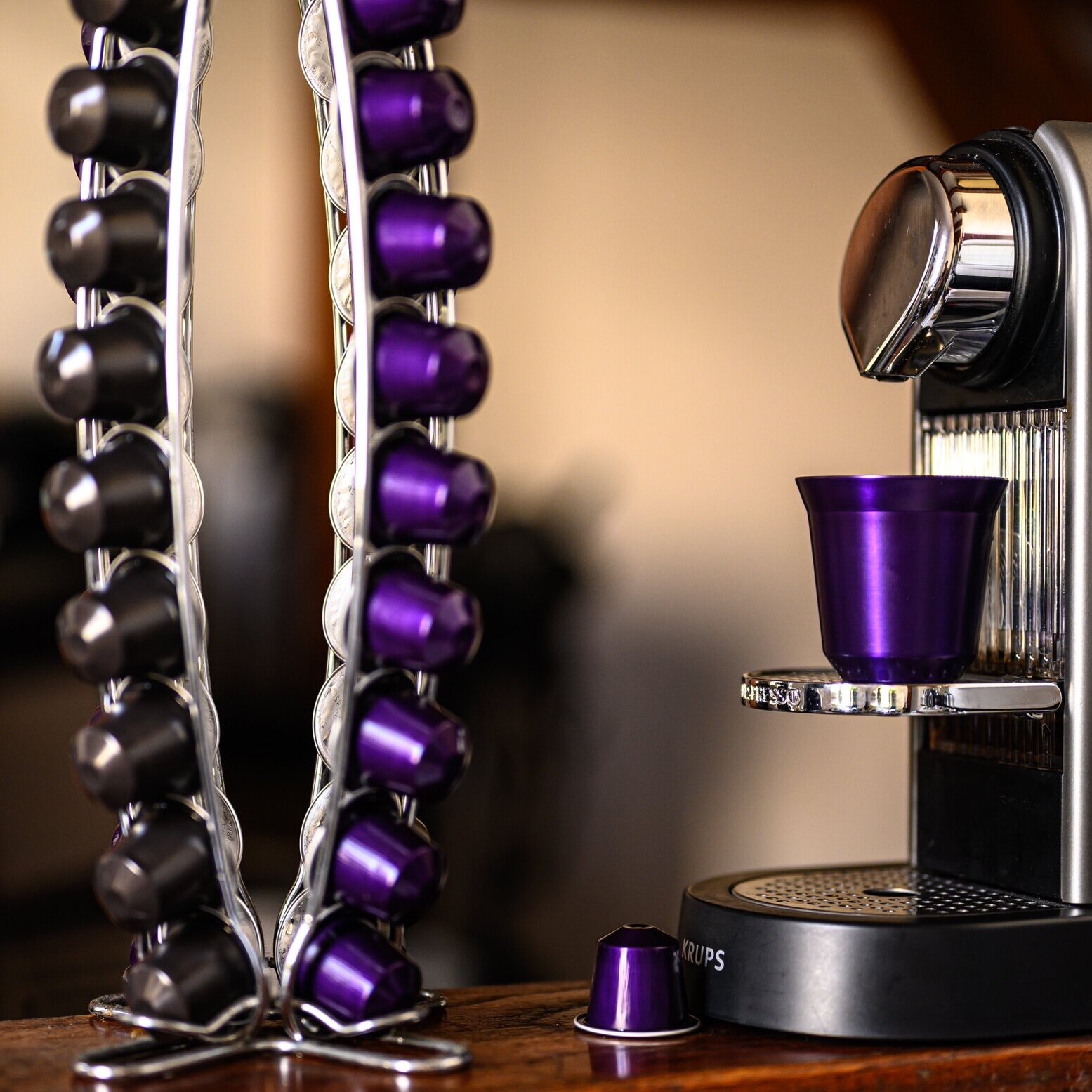





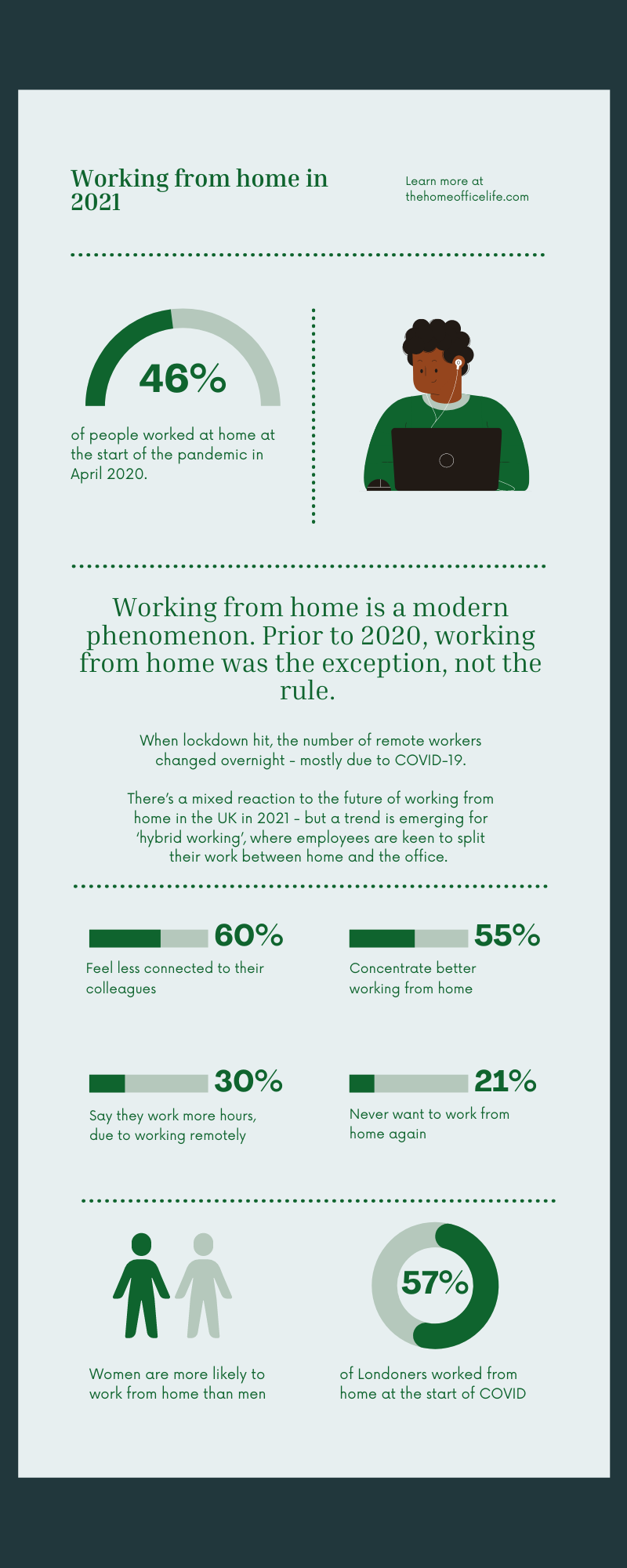

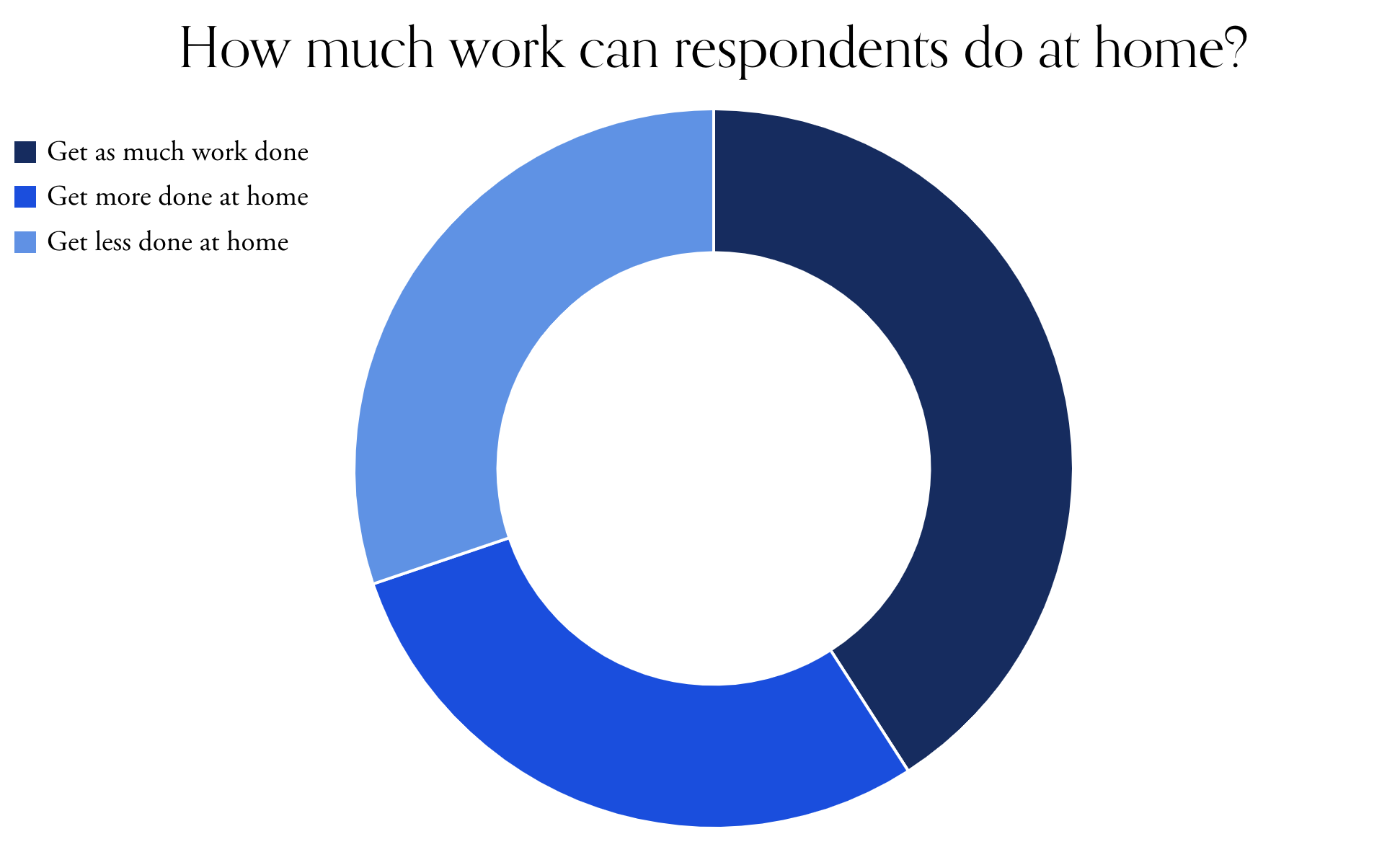

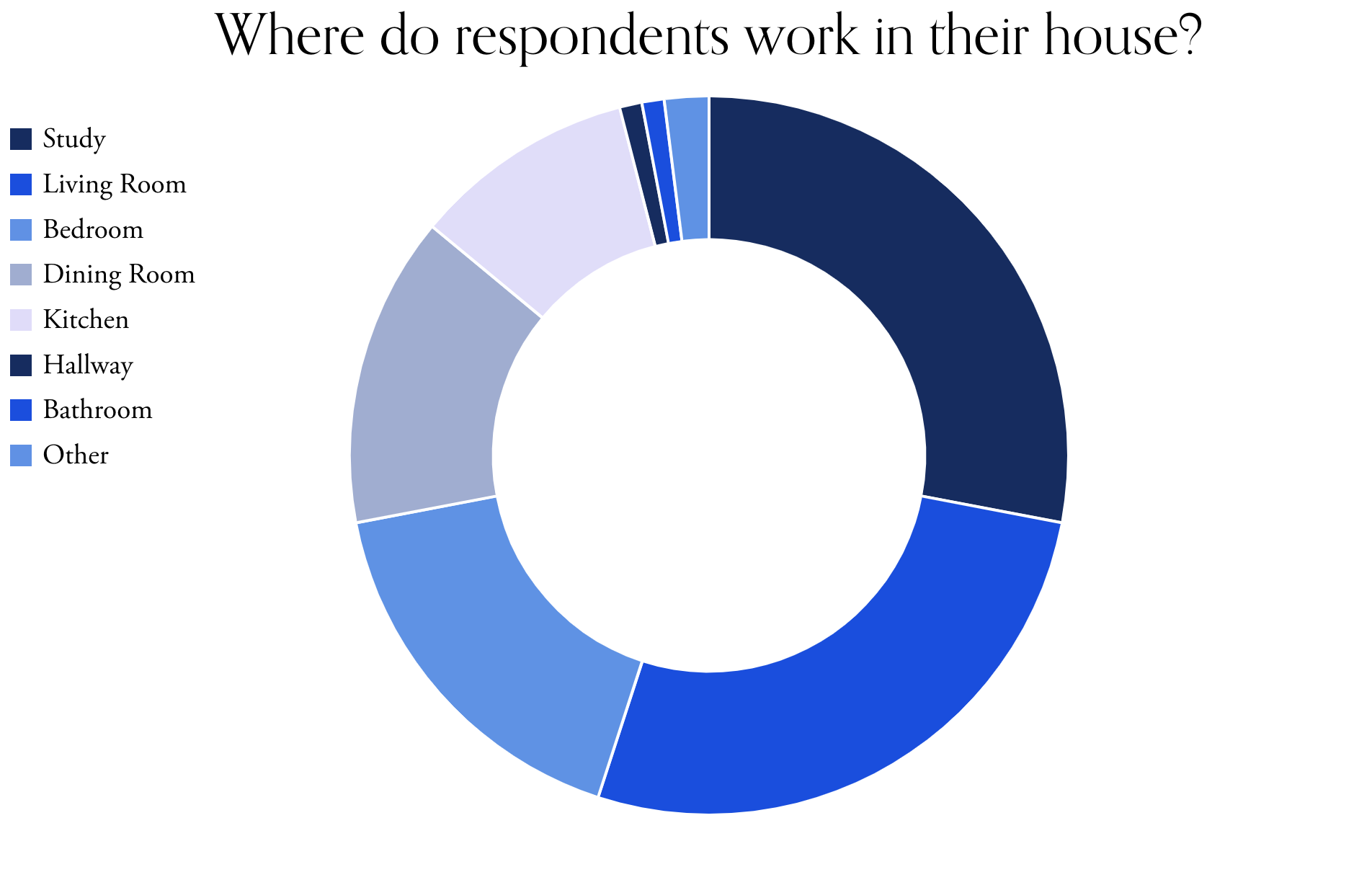
![Where can I find free coffee in the UK? [Updated for October 2025]](https://images.squarespace-cdn.com/content/v1/606e11b80b94173f33b2dd54/1760361666406-TCN6VSL6BU5TU5L8D6VC/unsplash-image-FIMTCLmEhFE.jpg)















